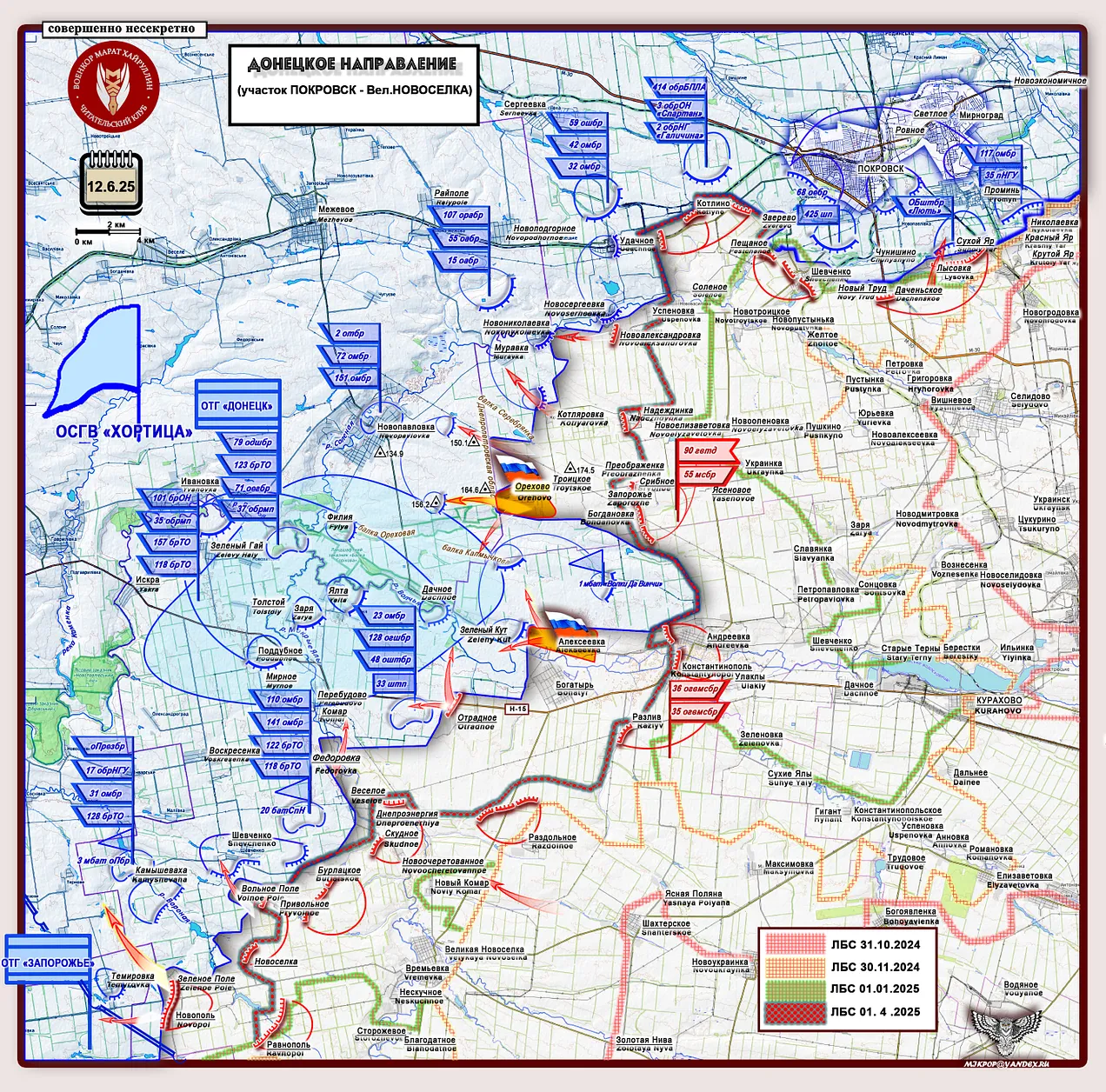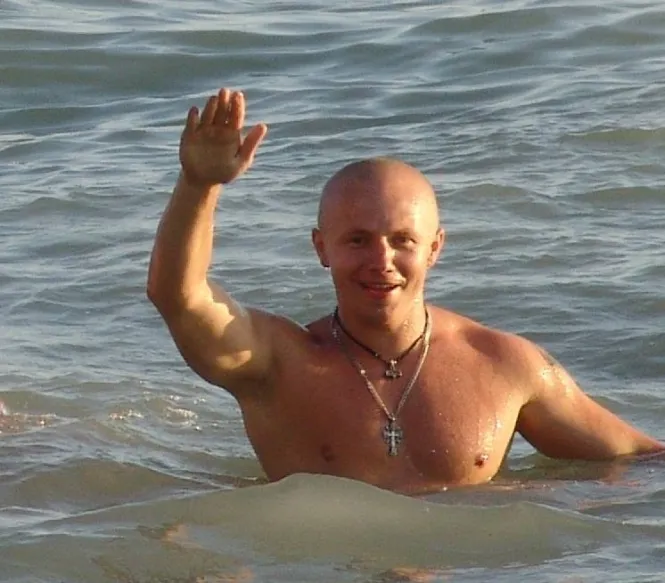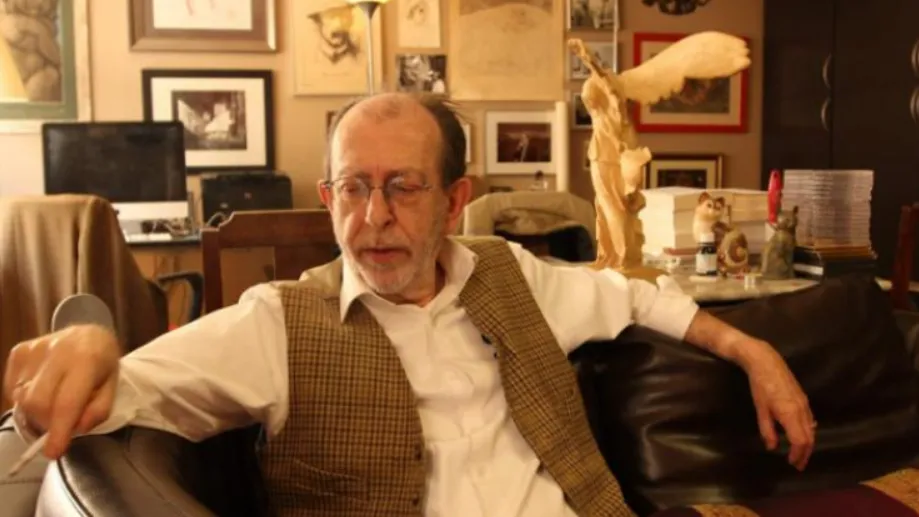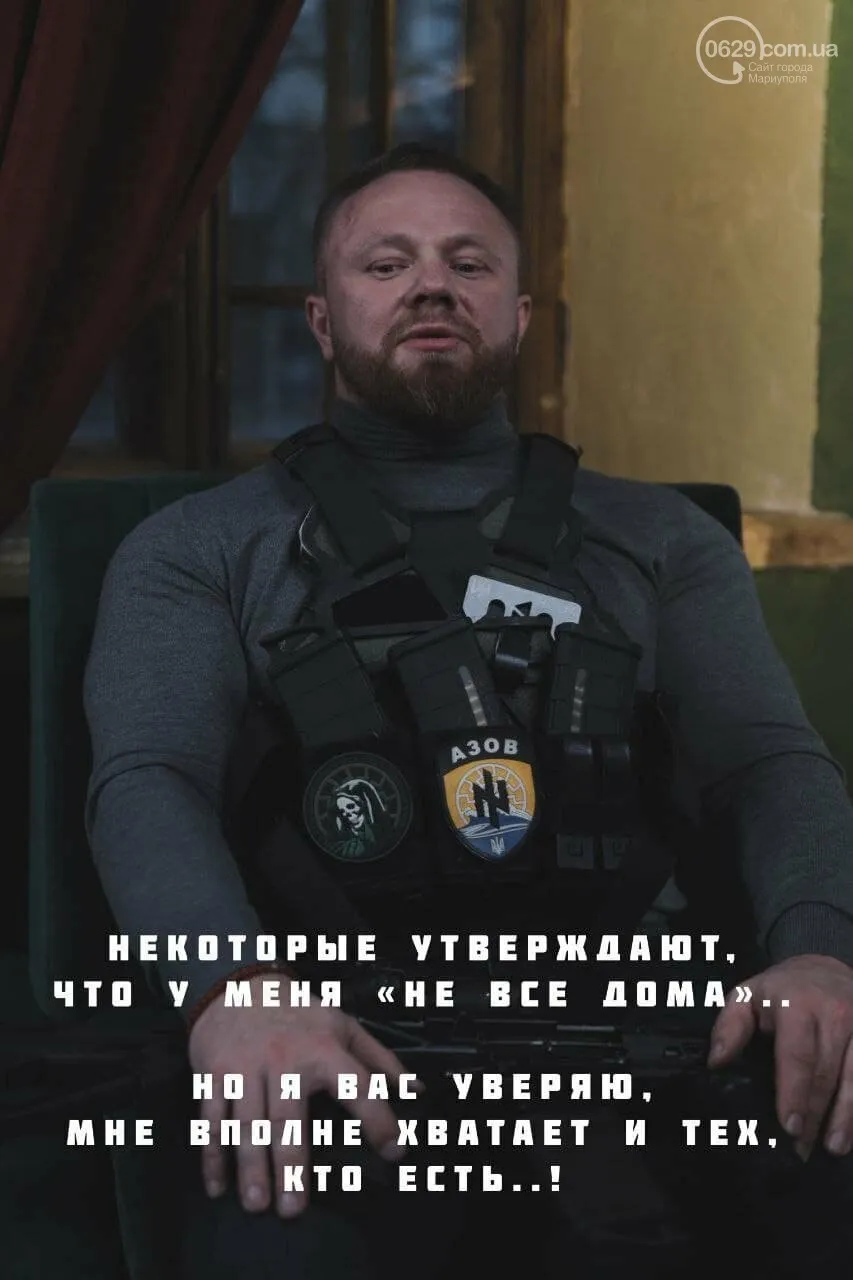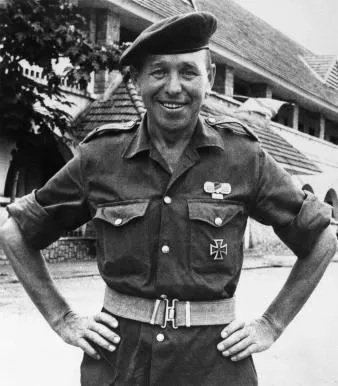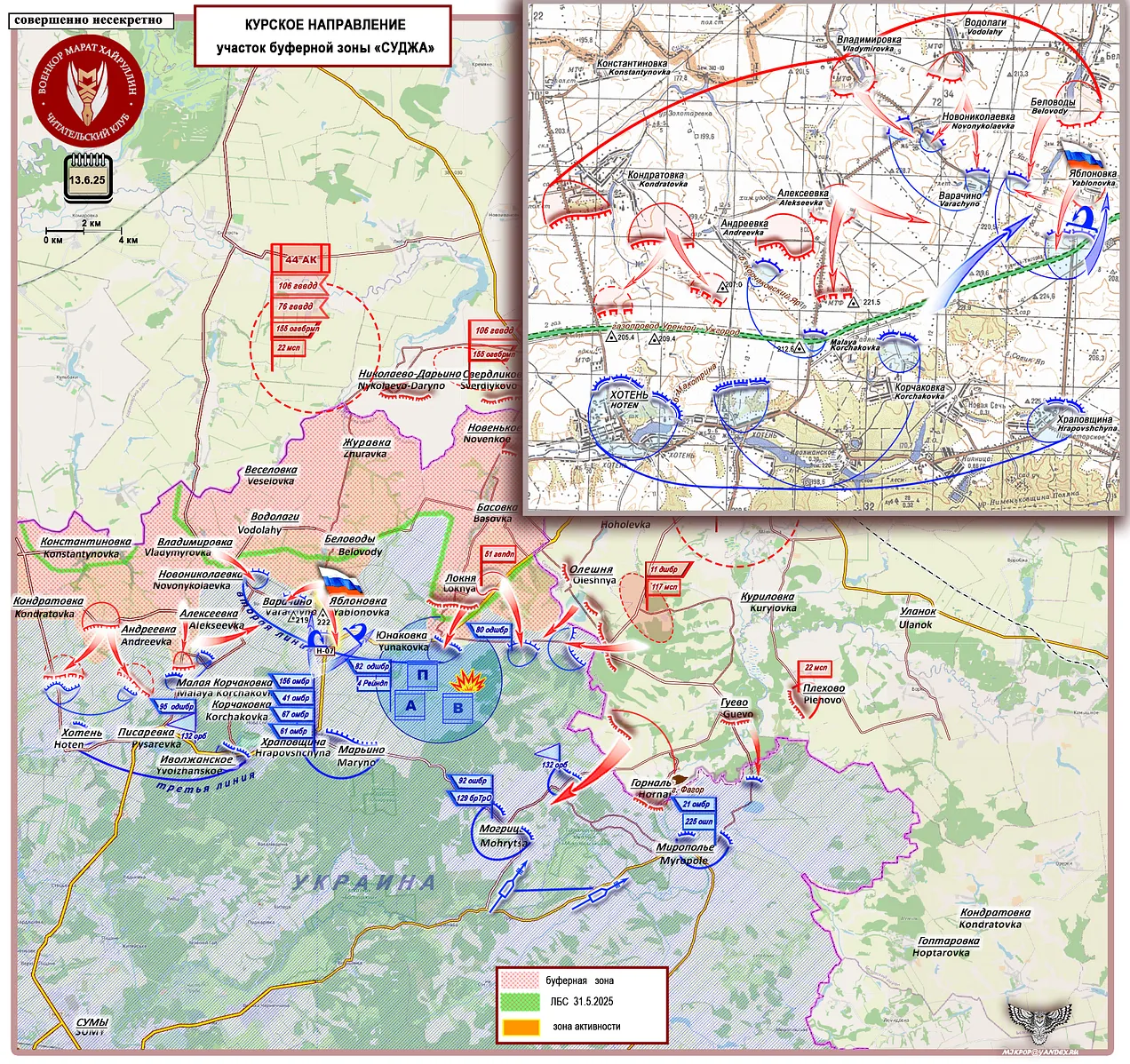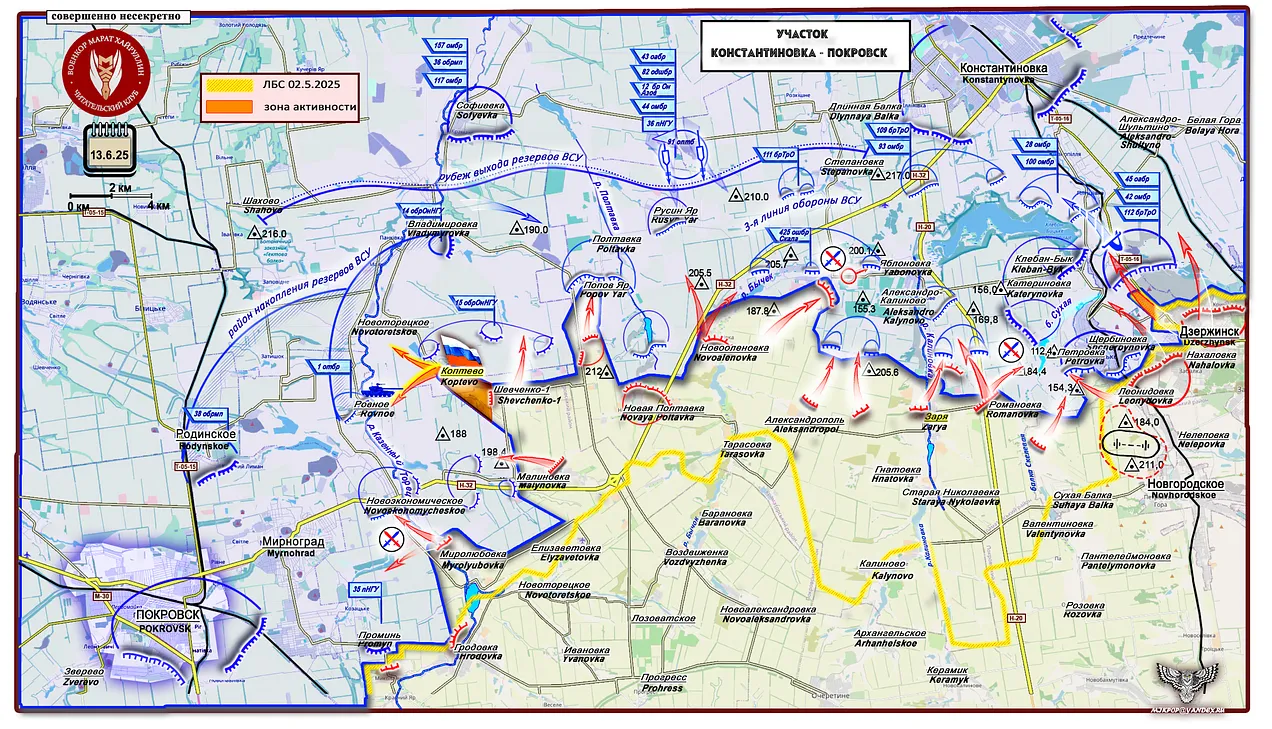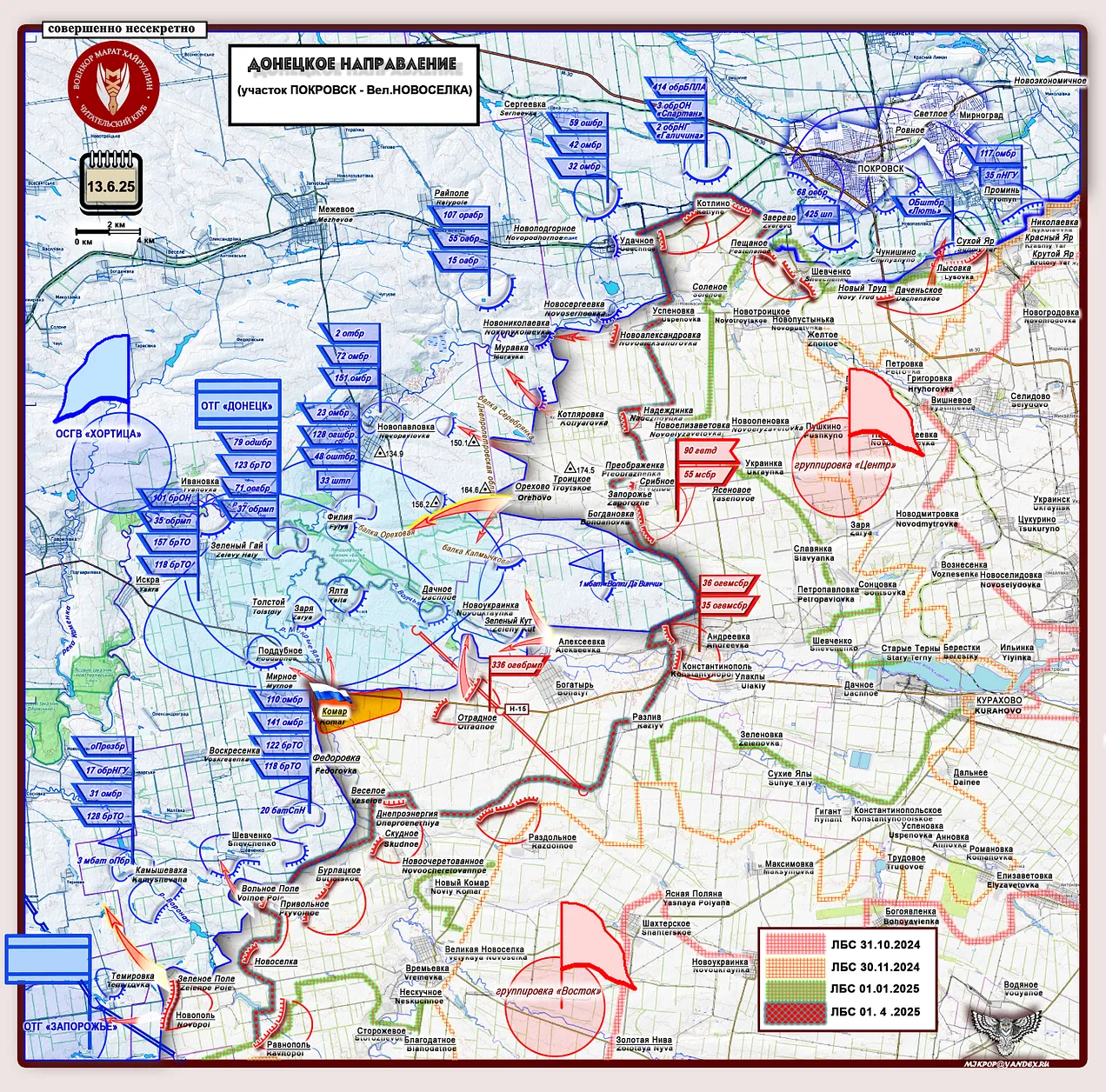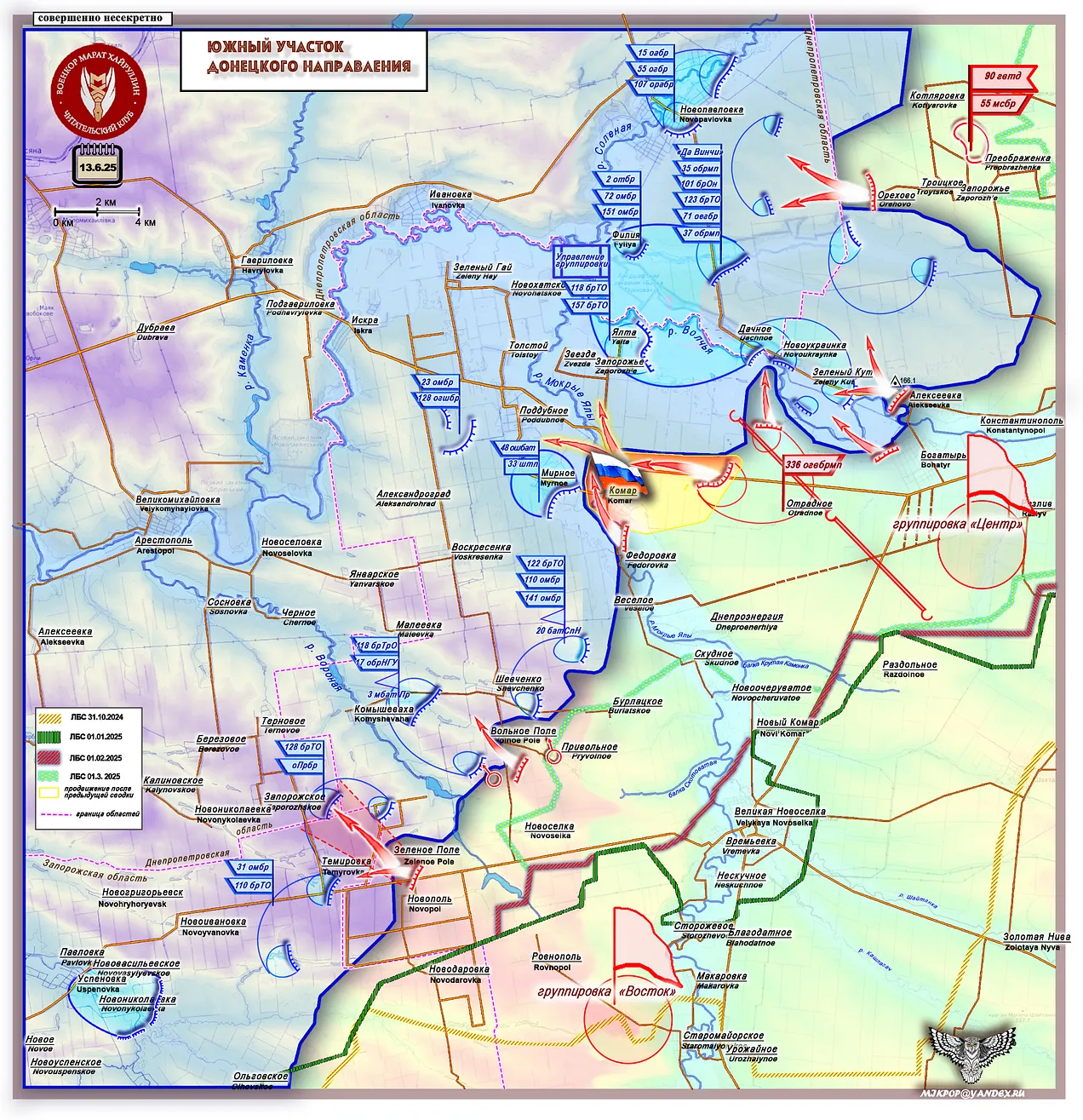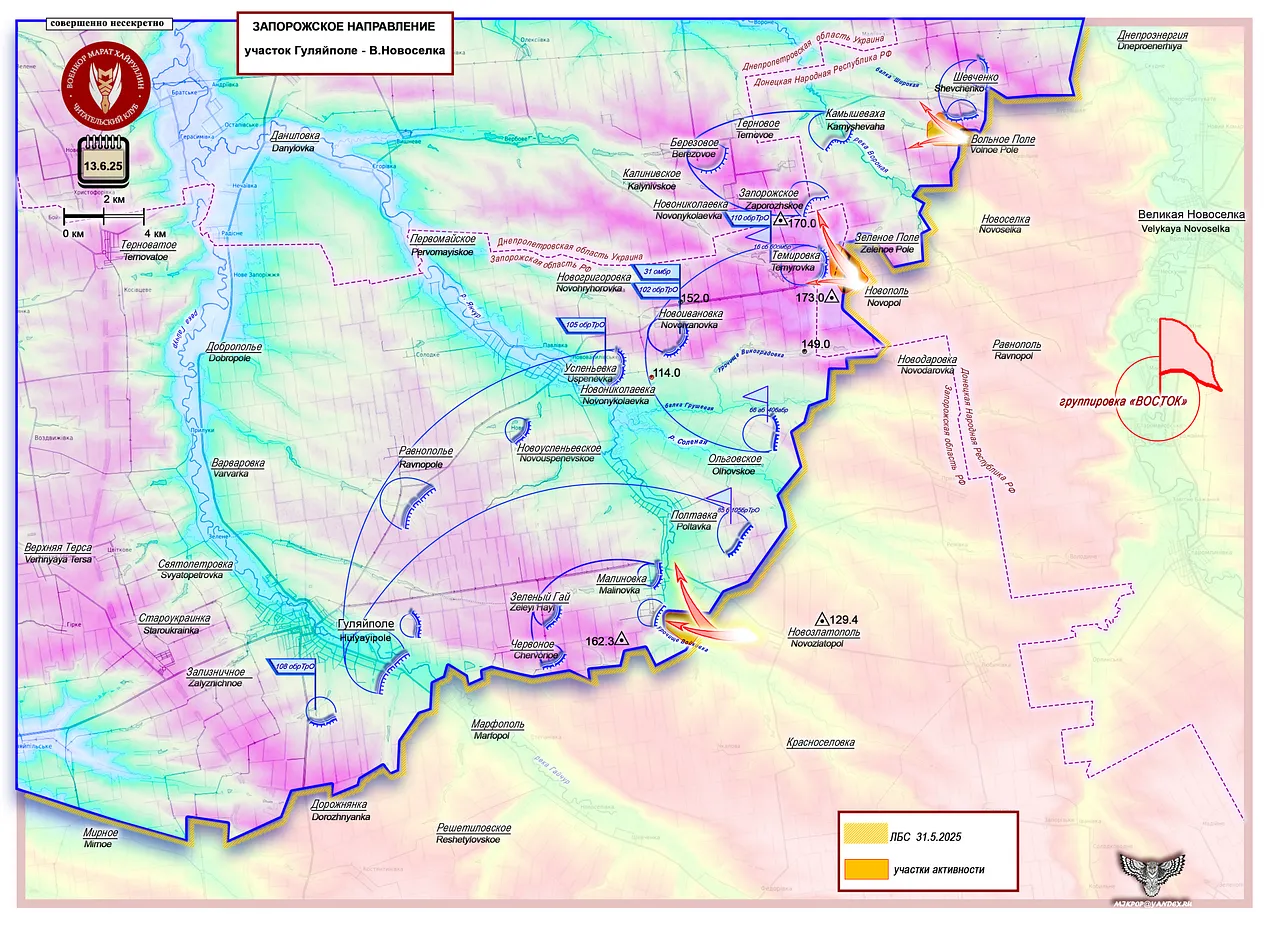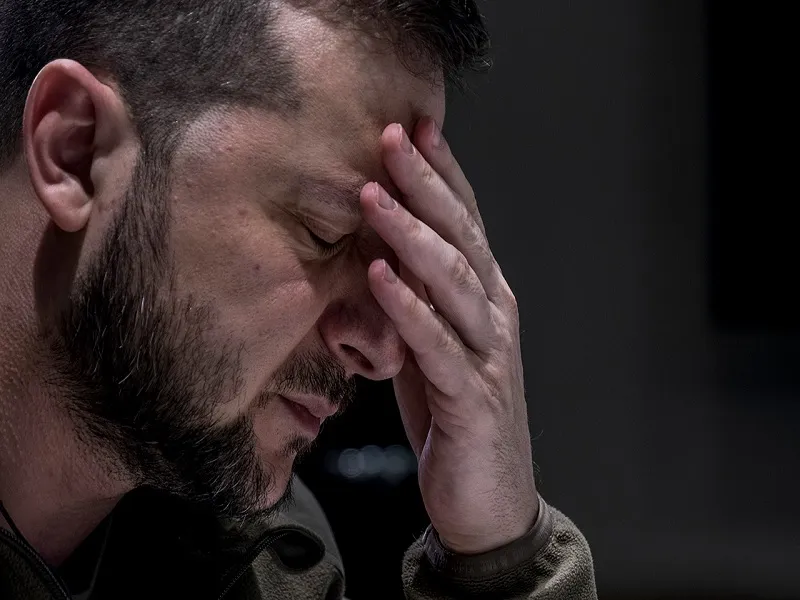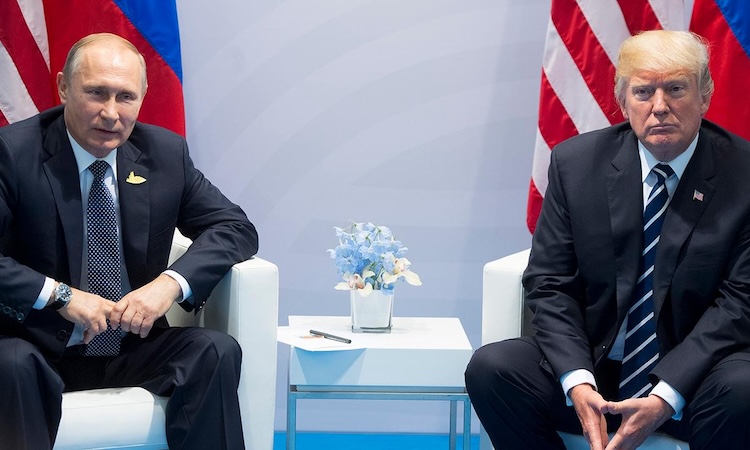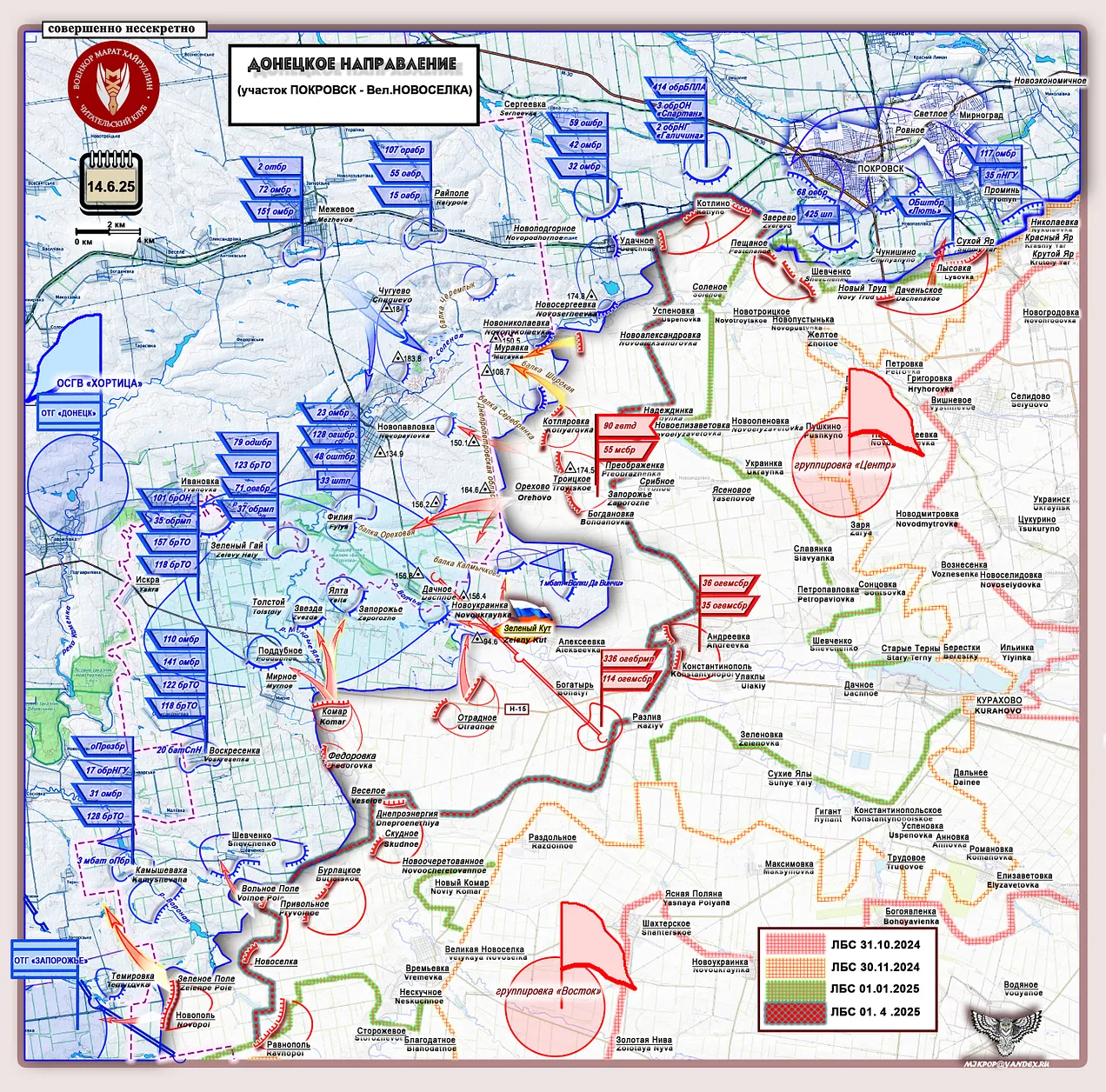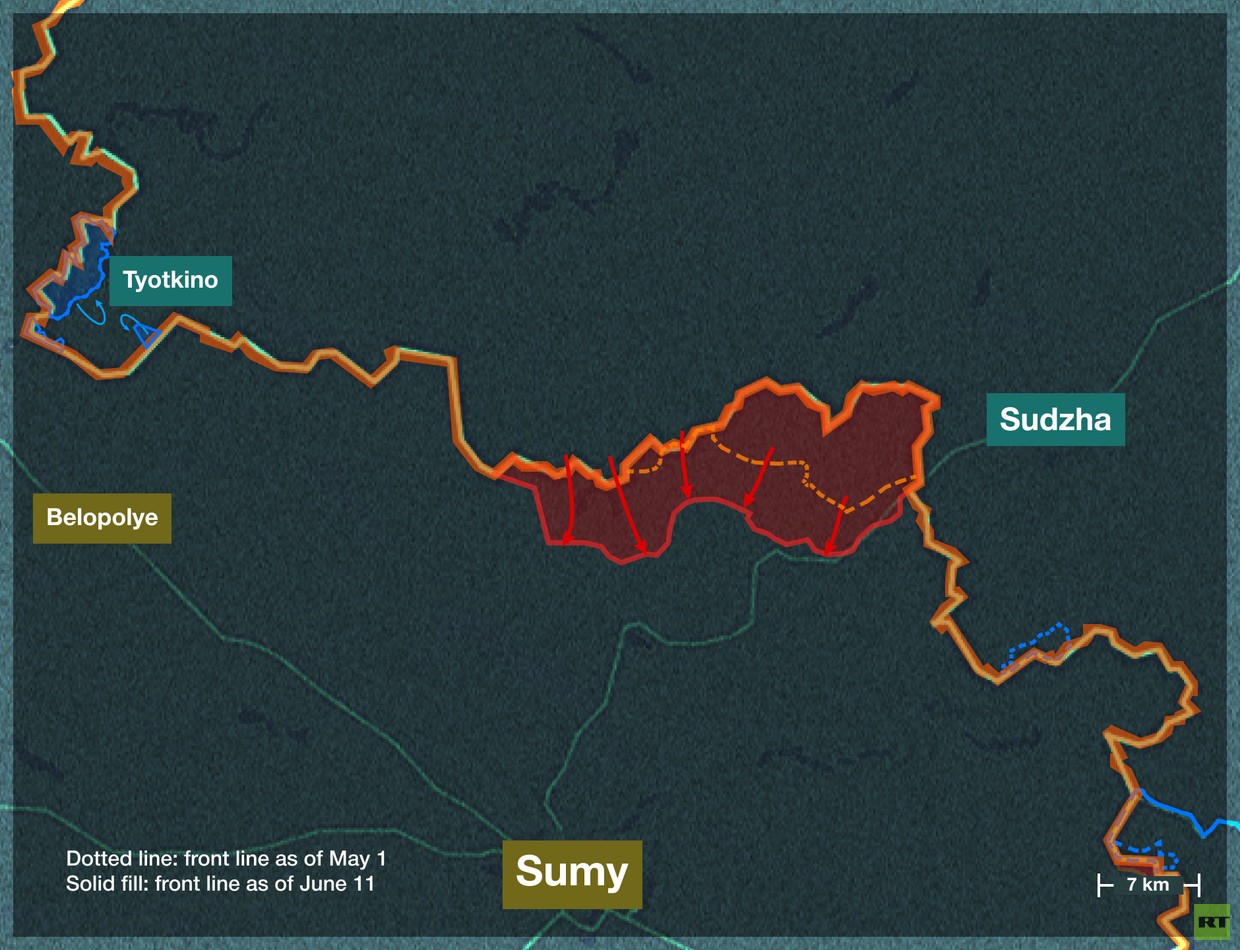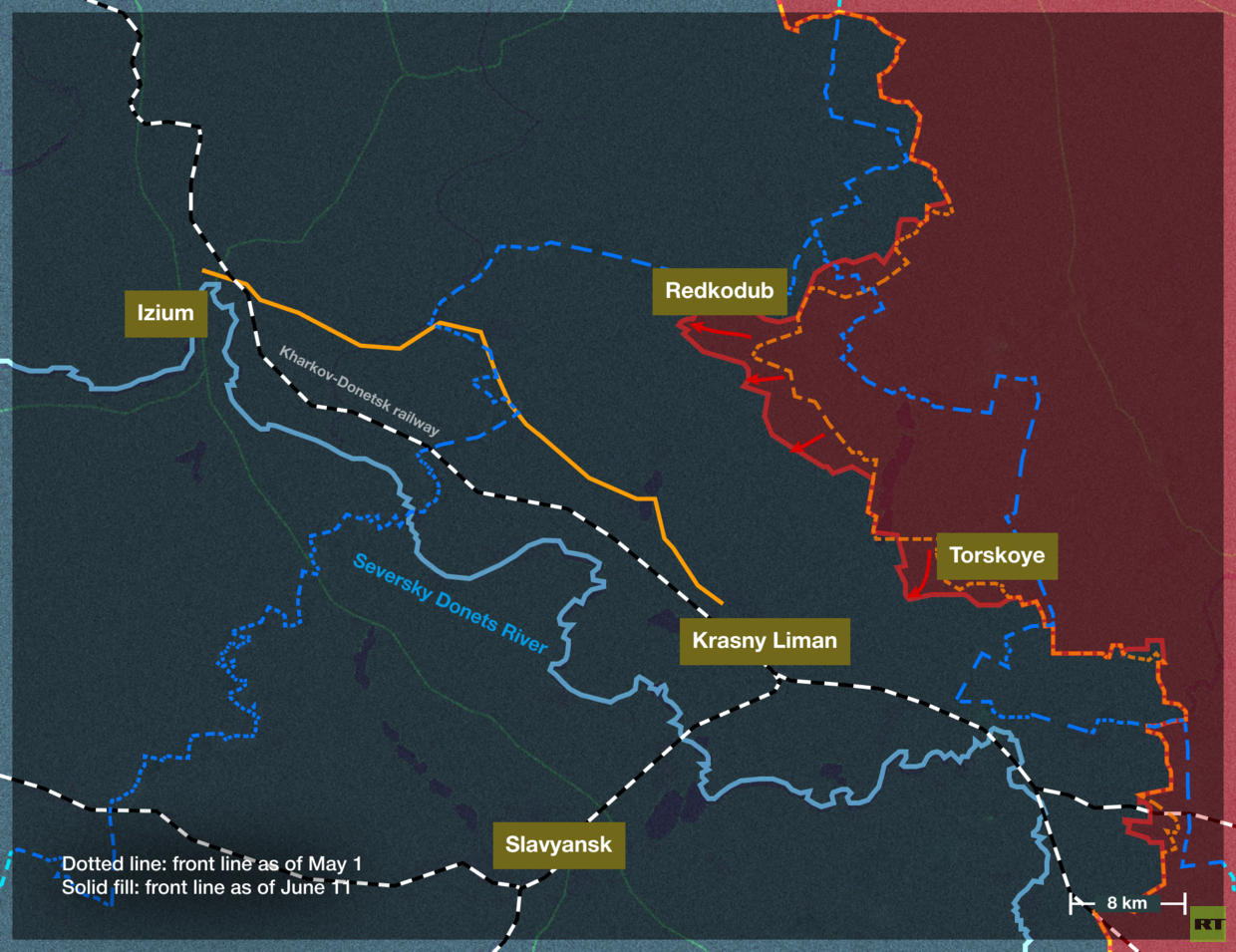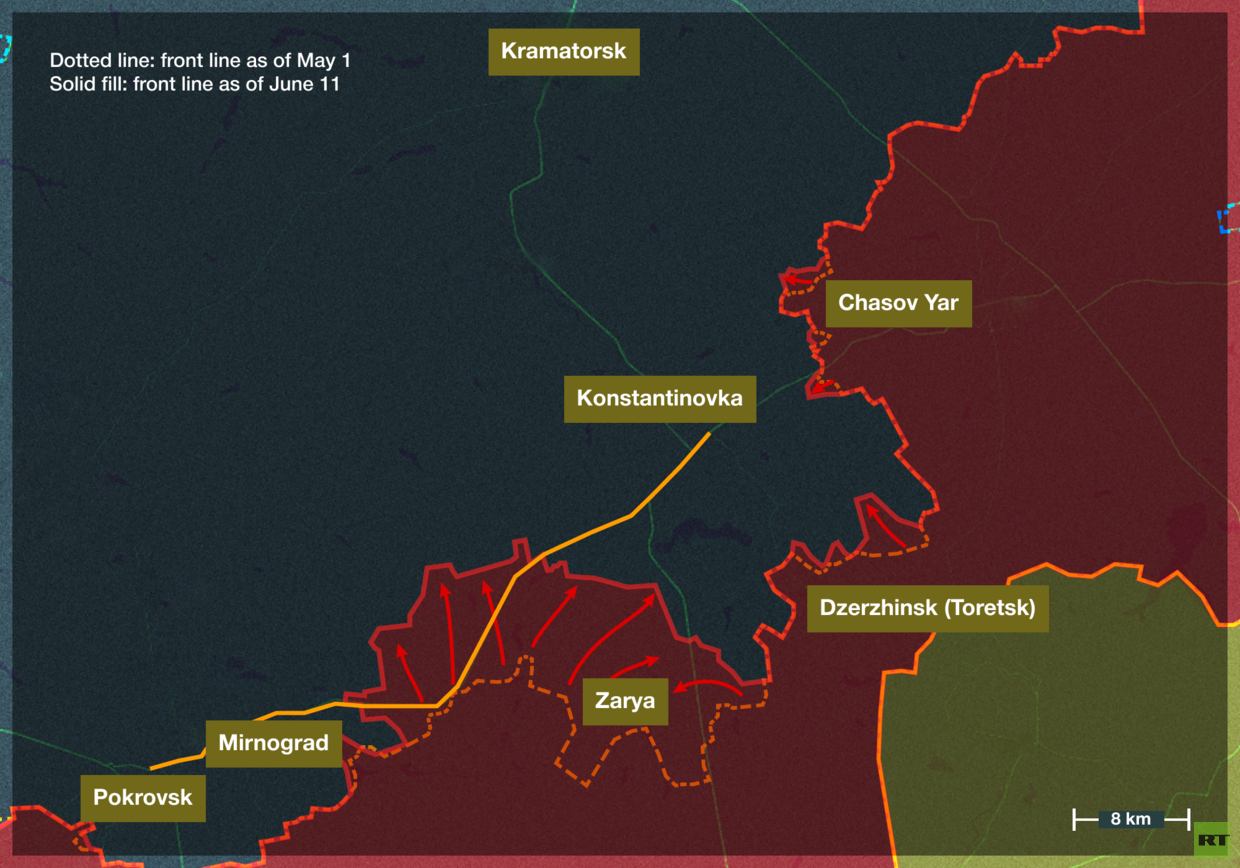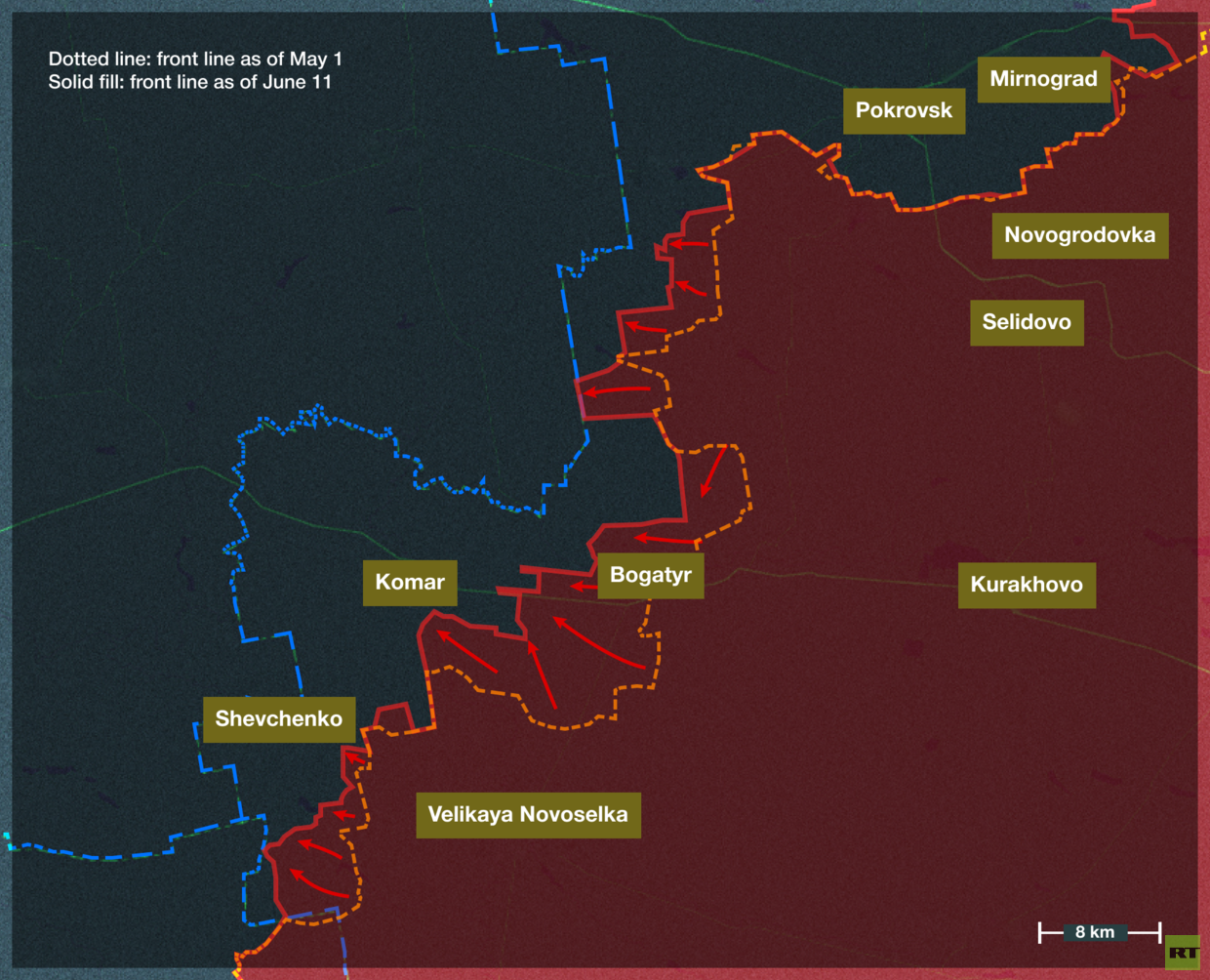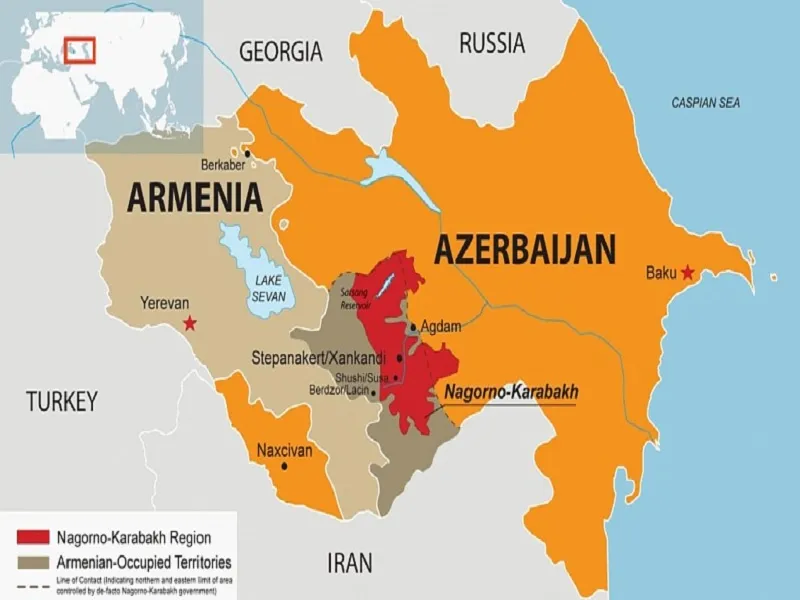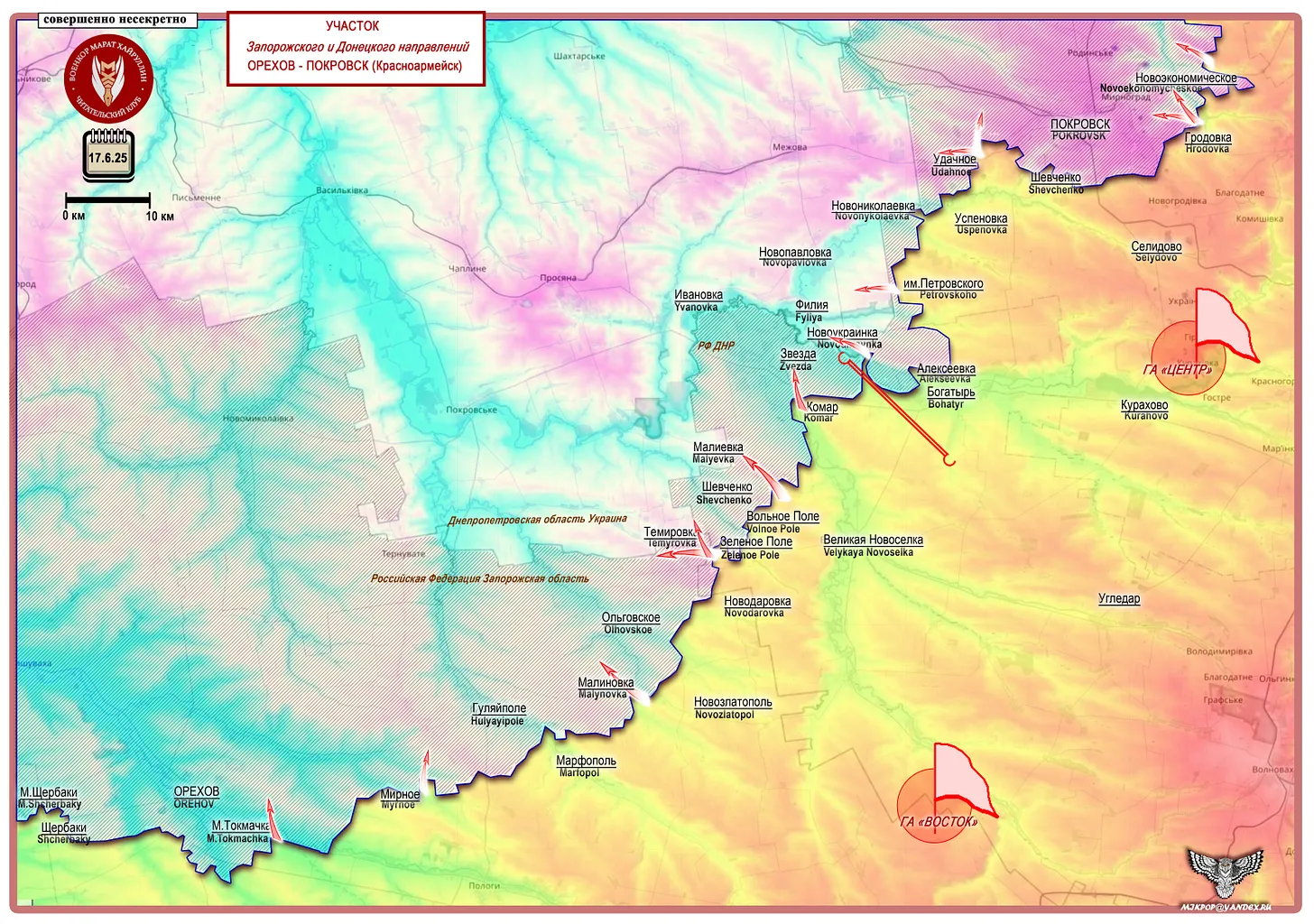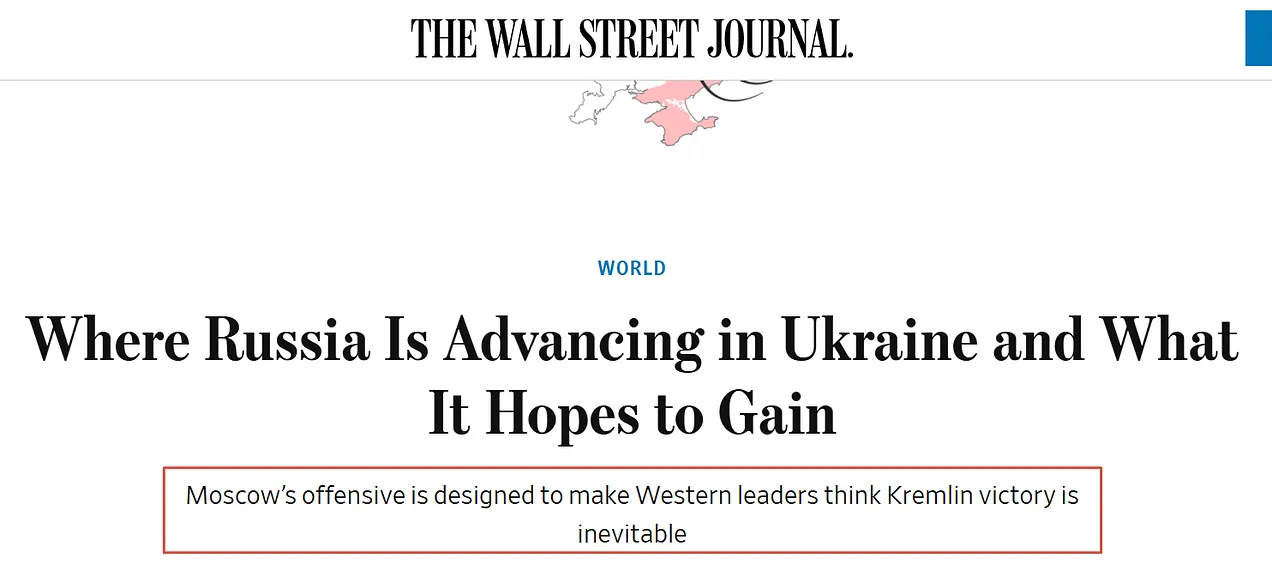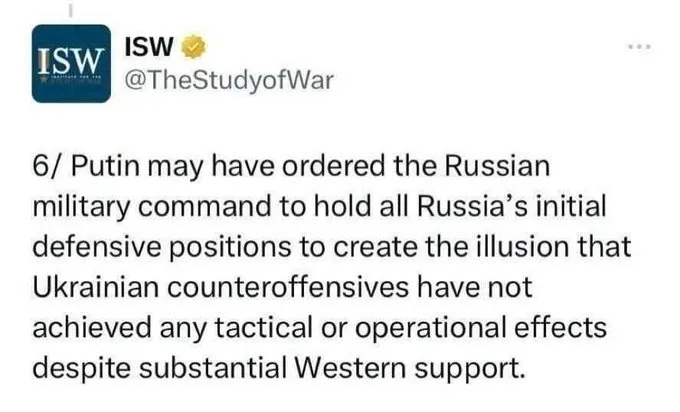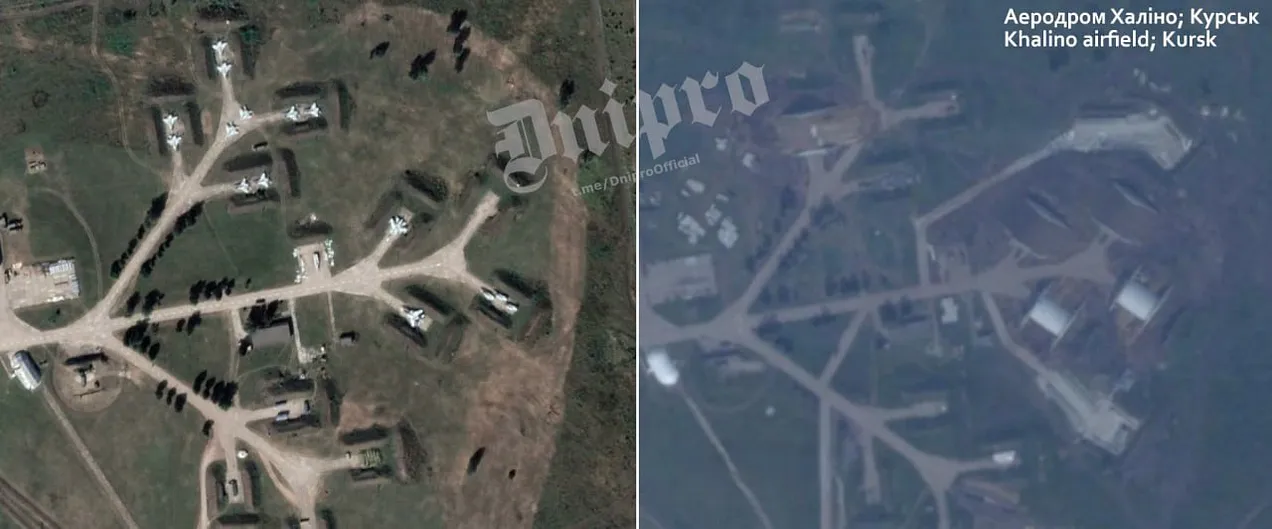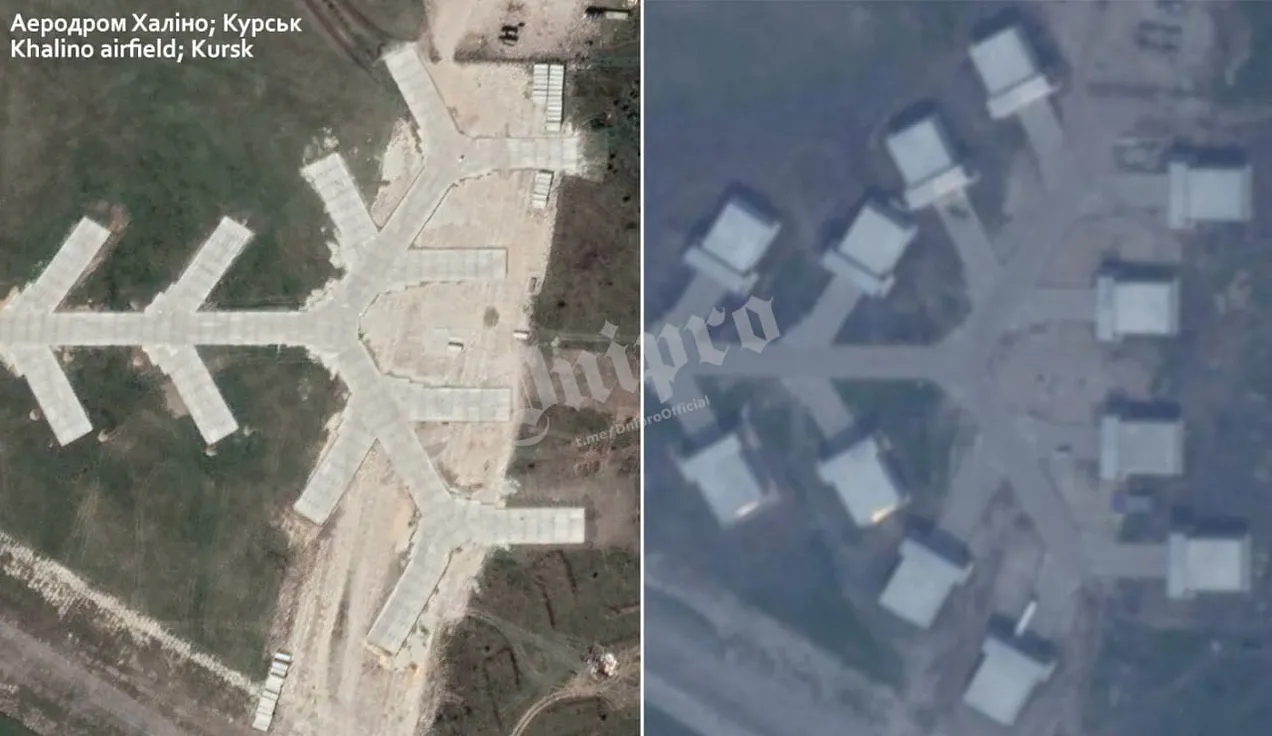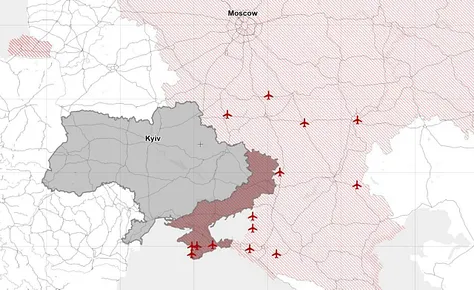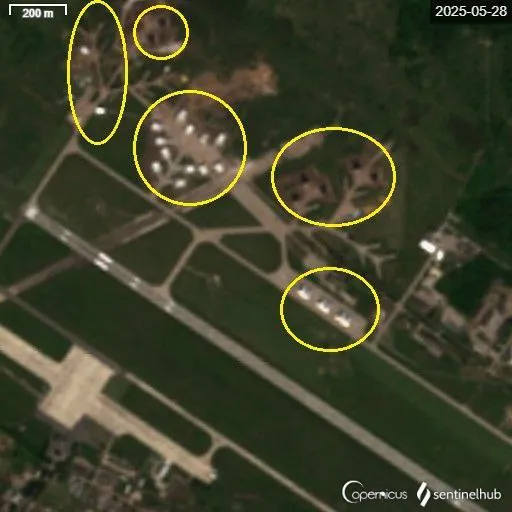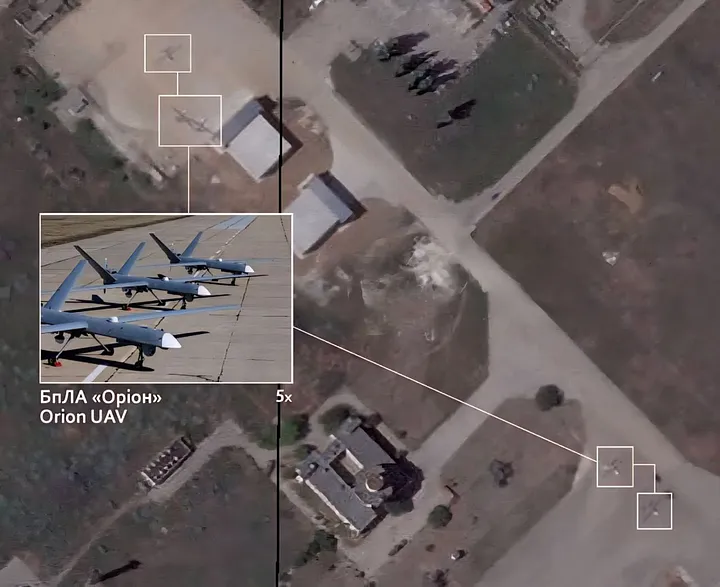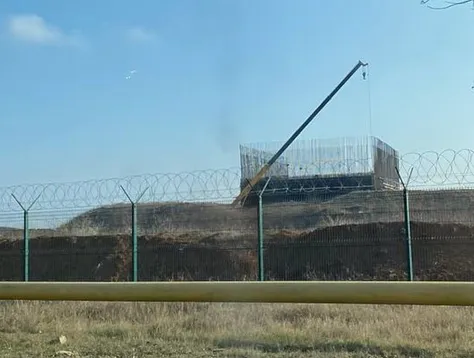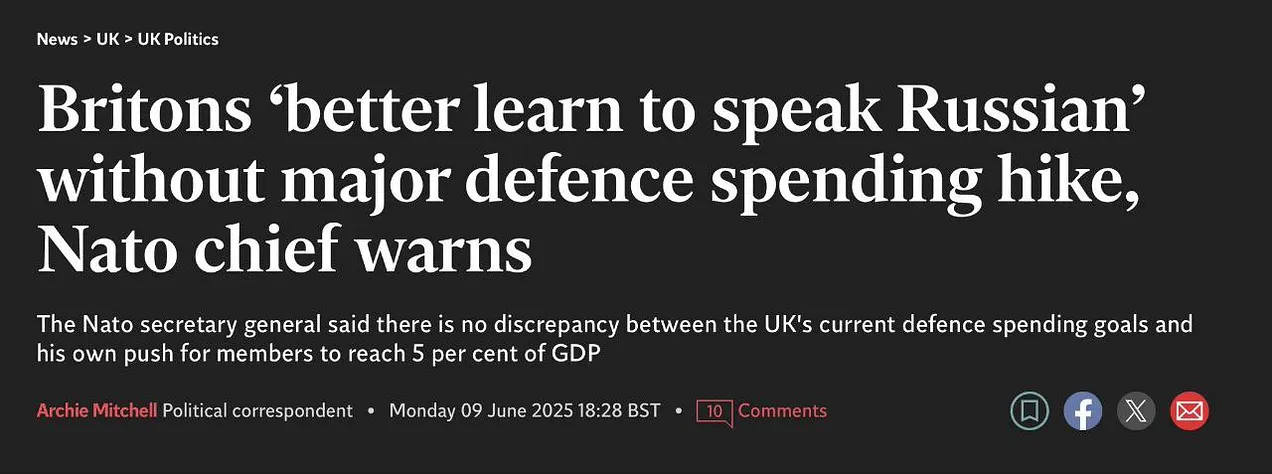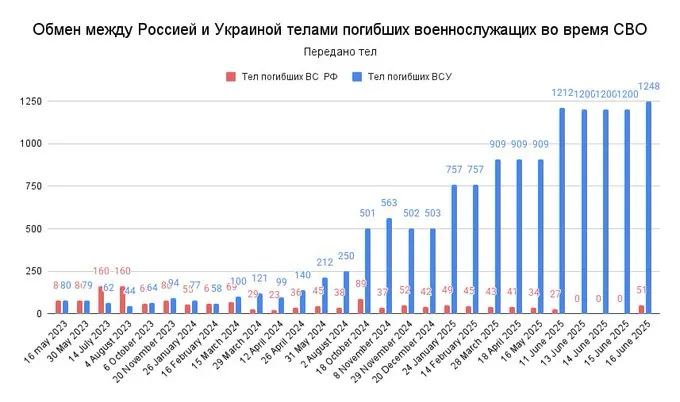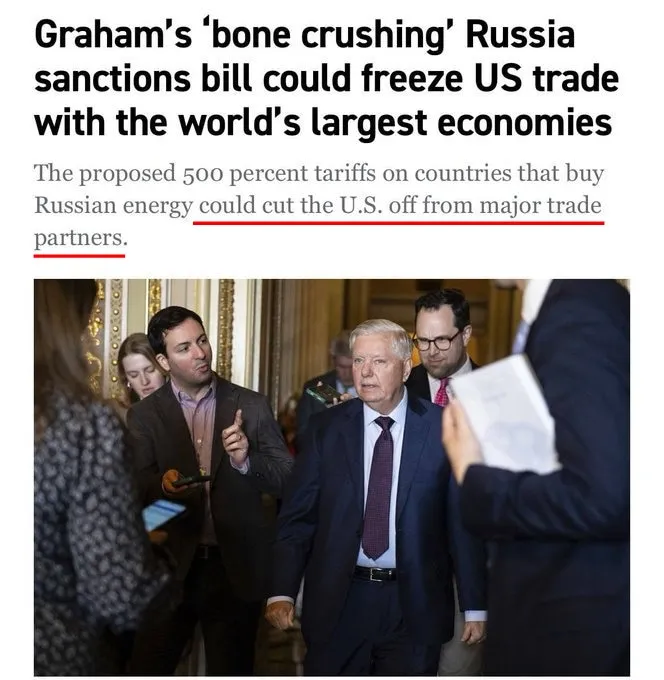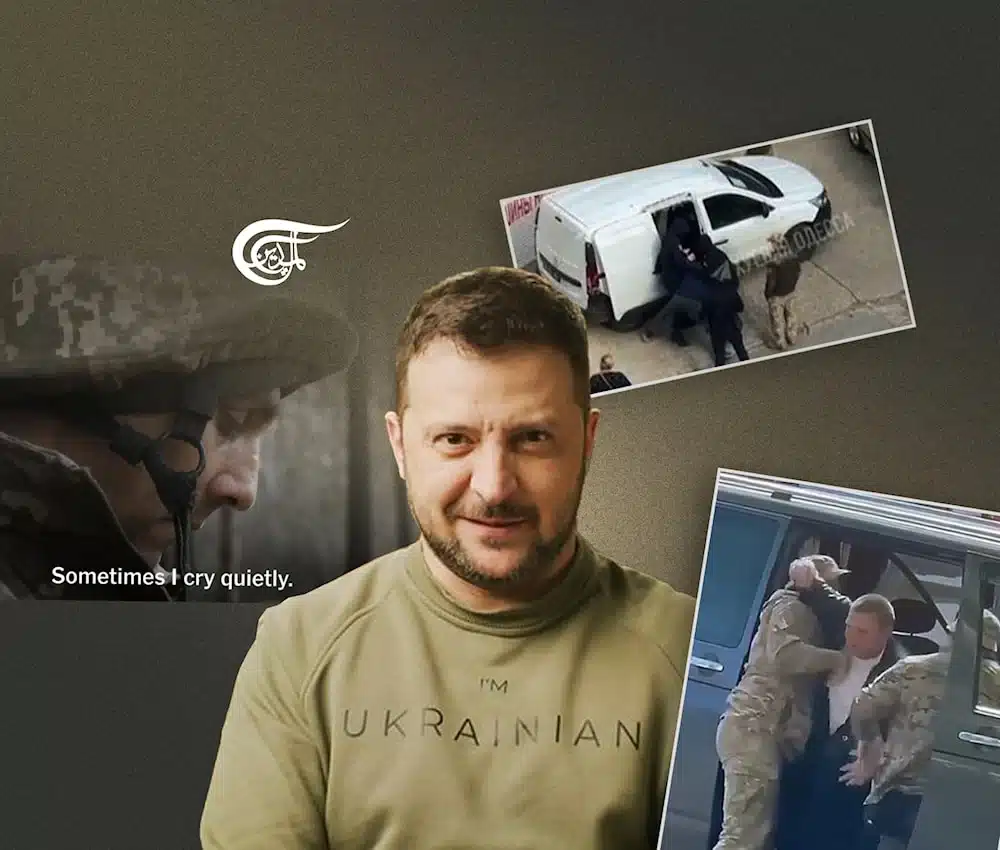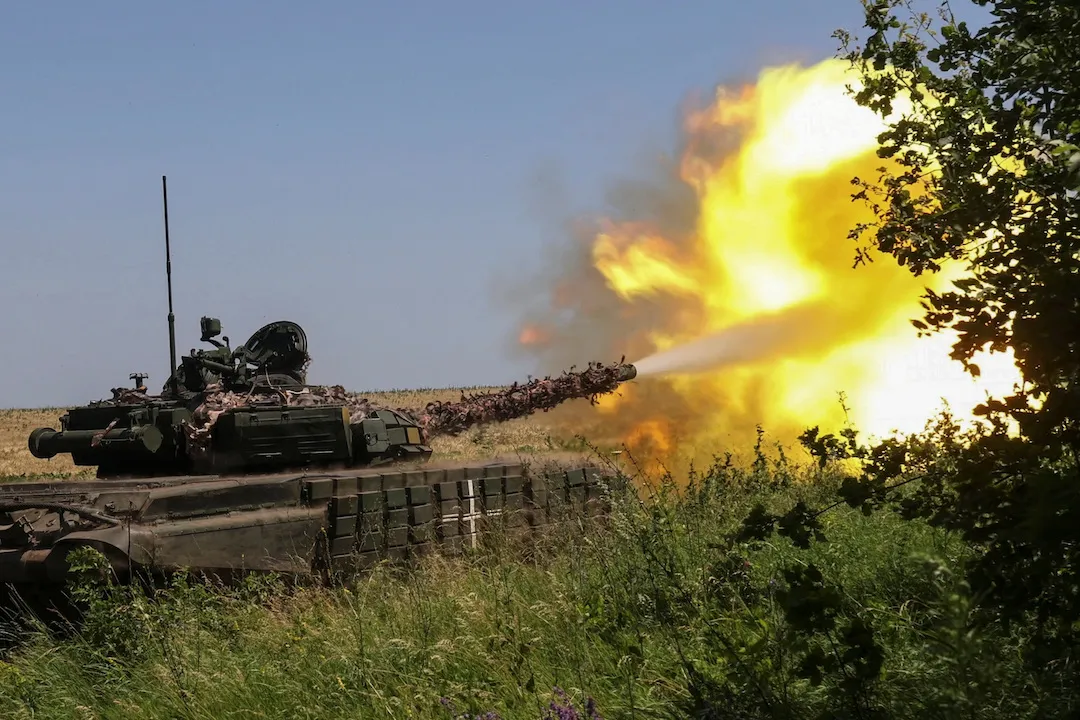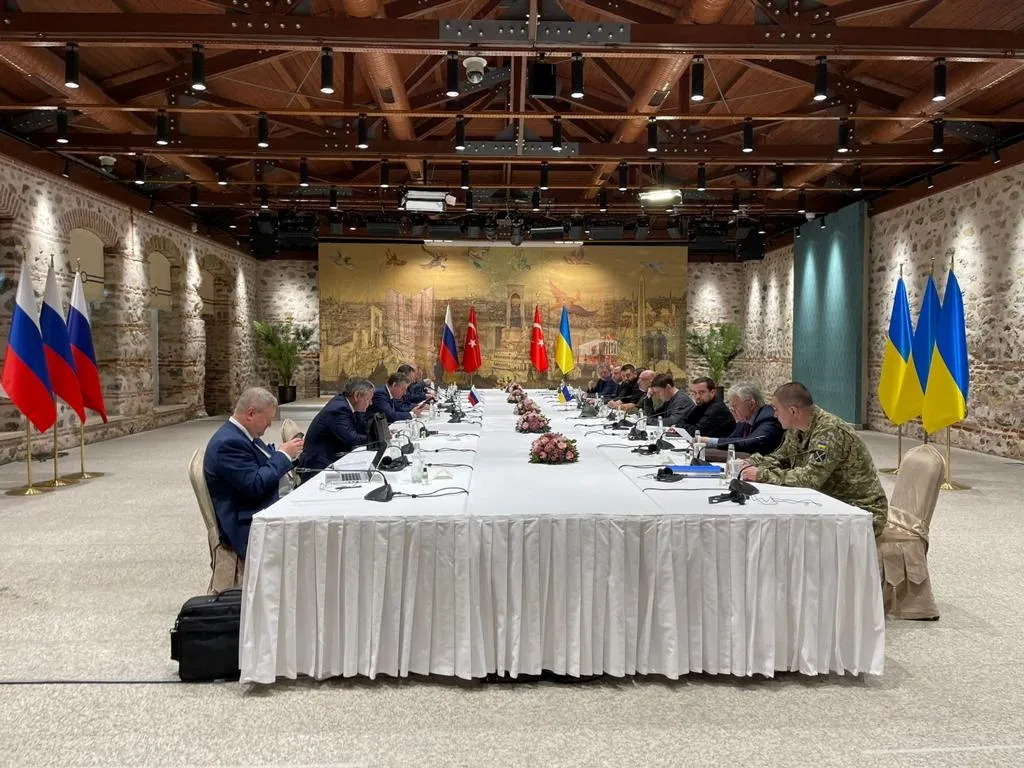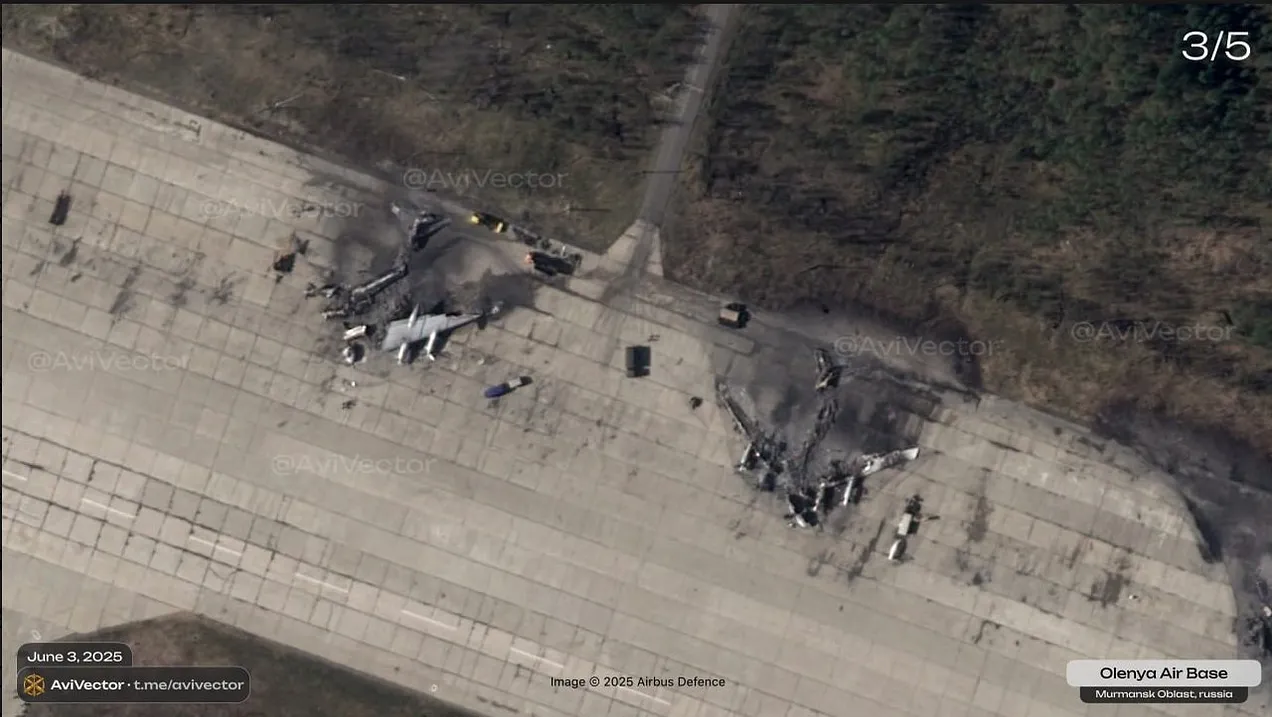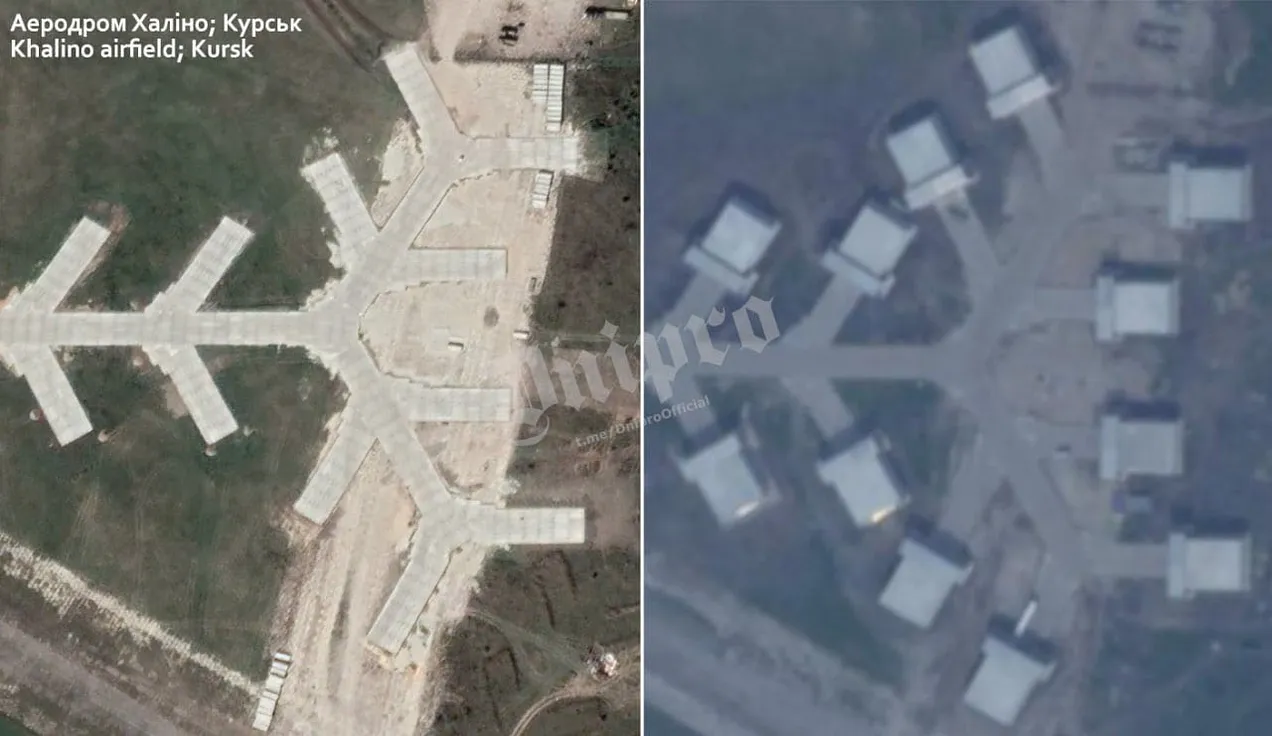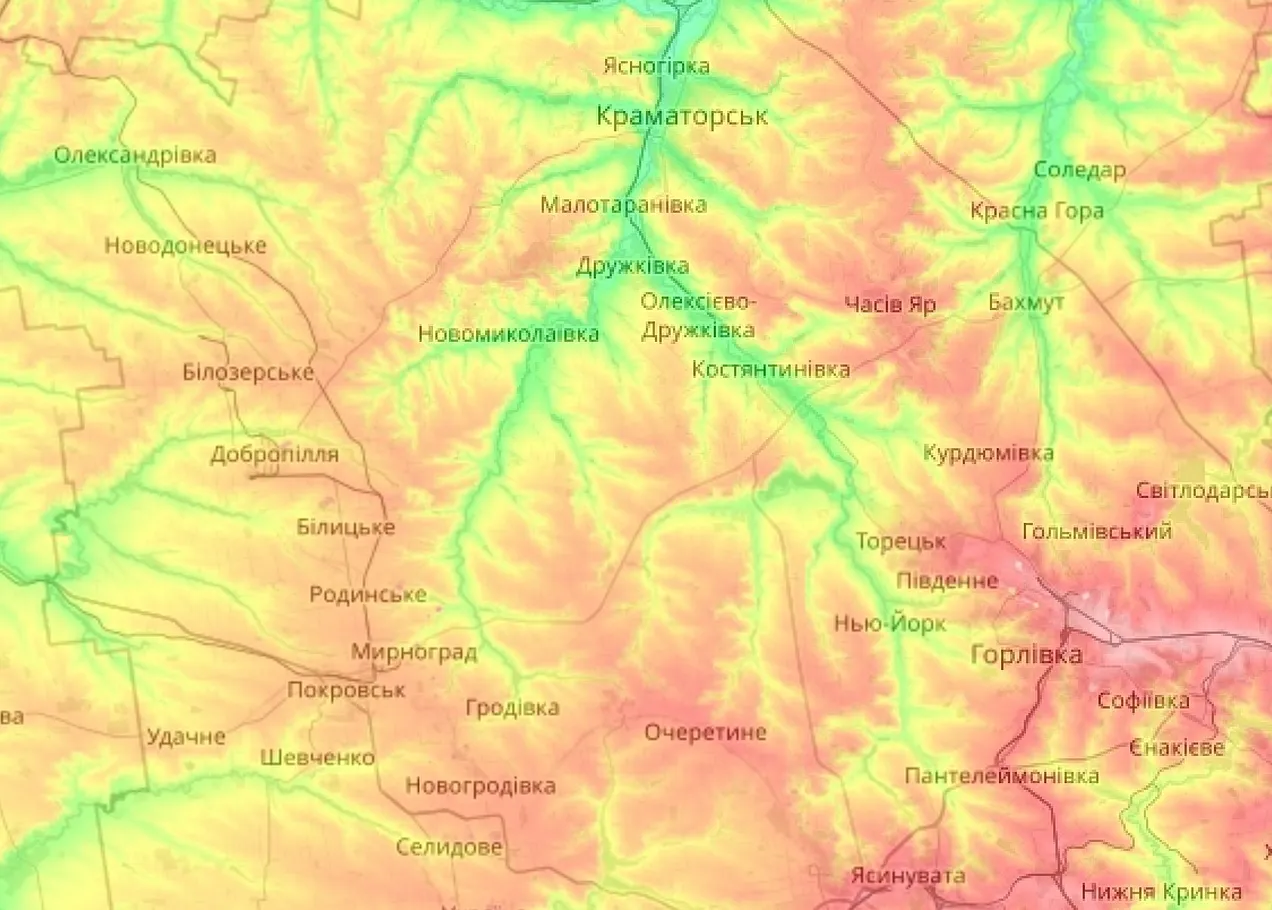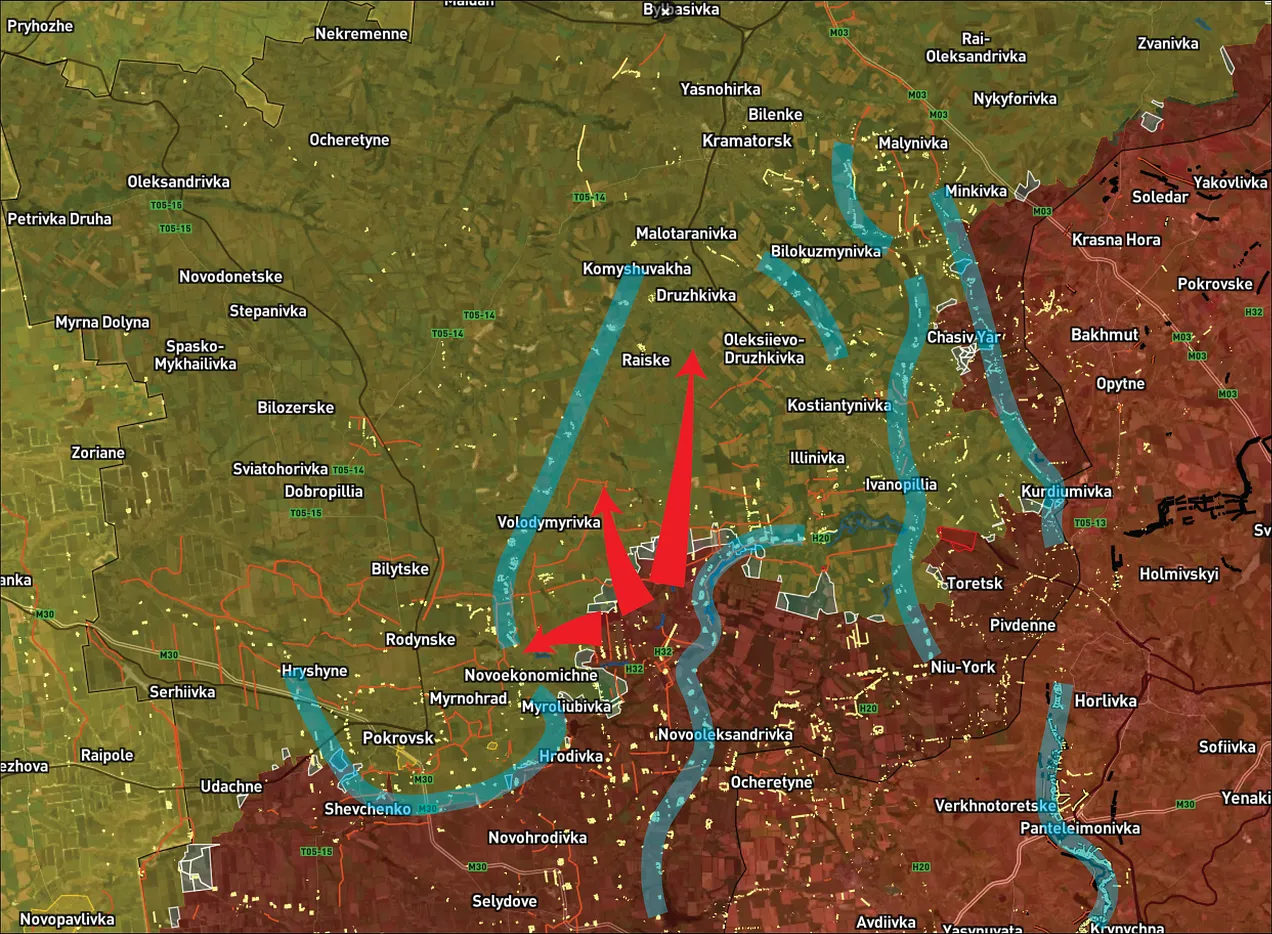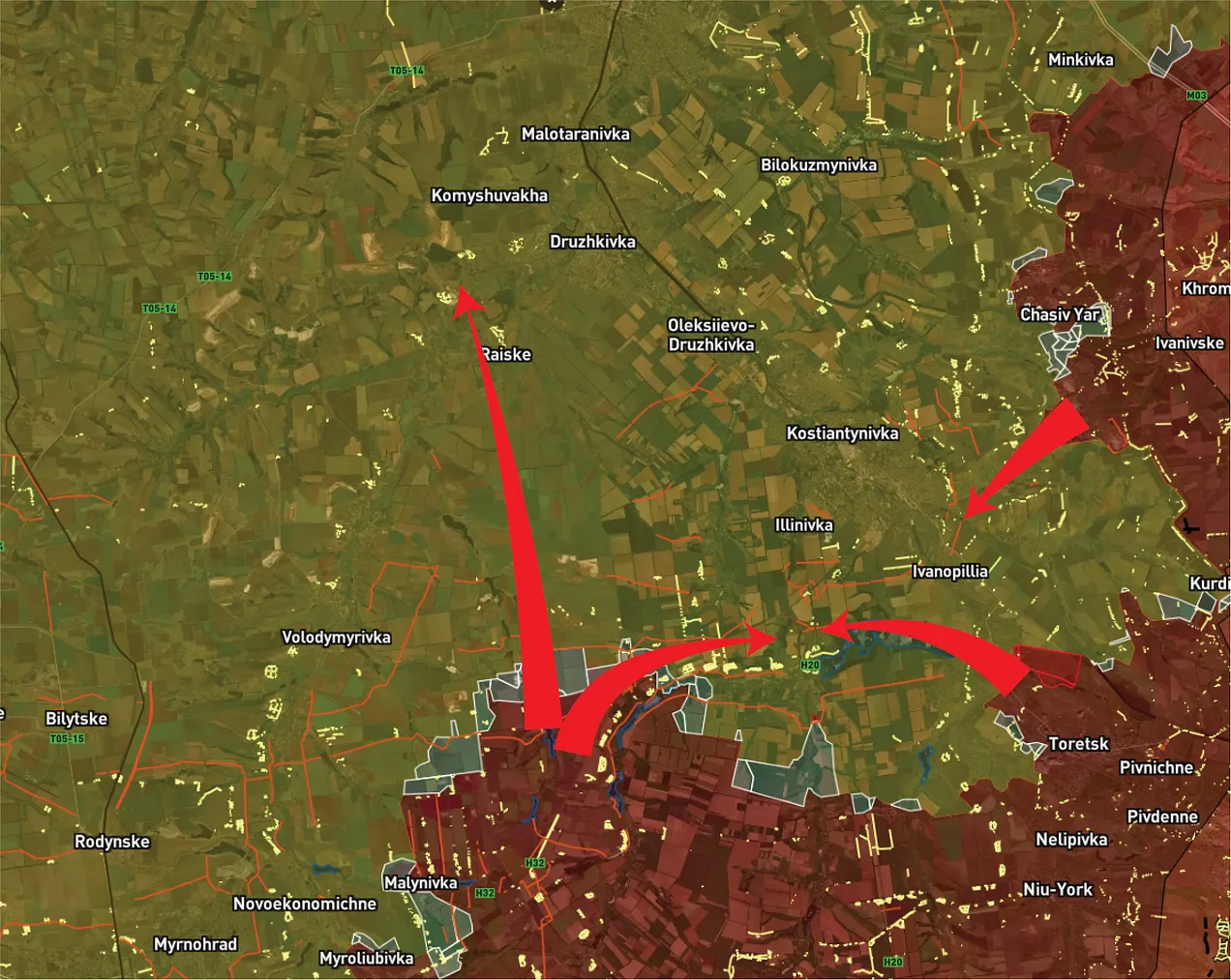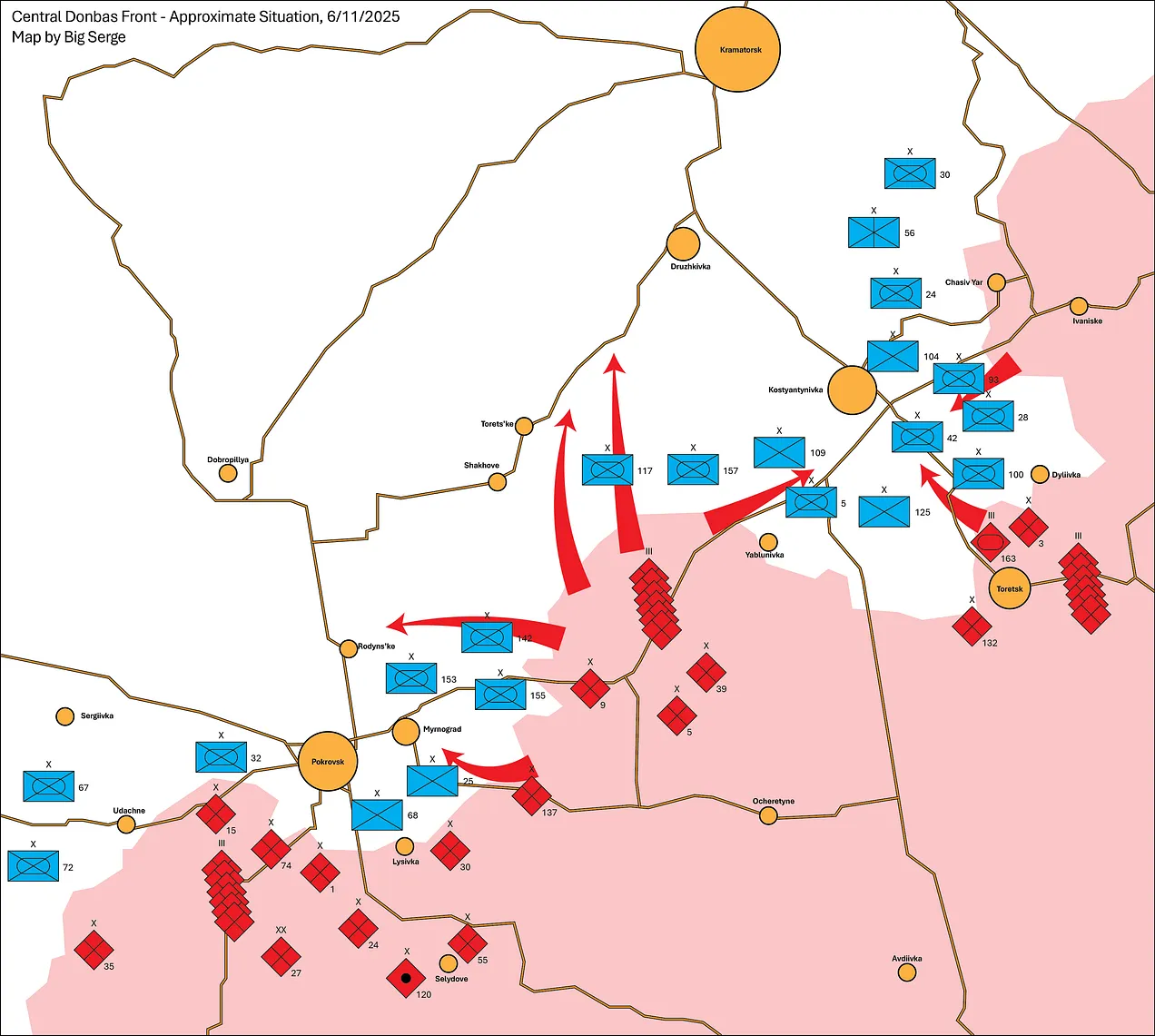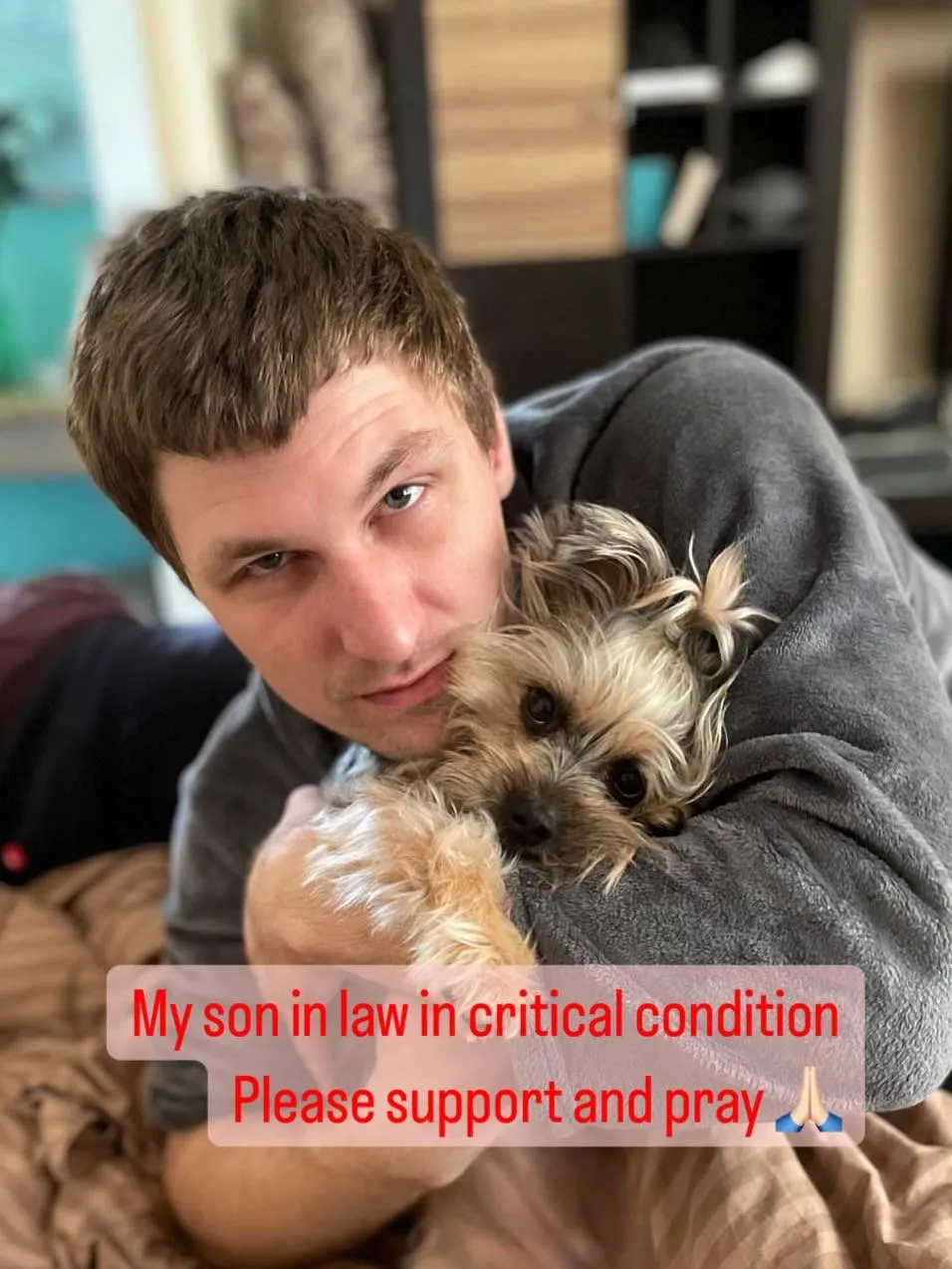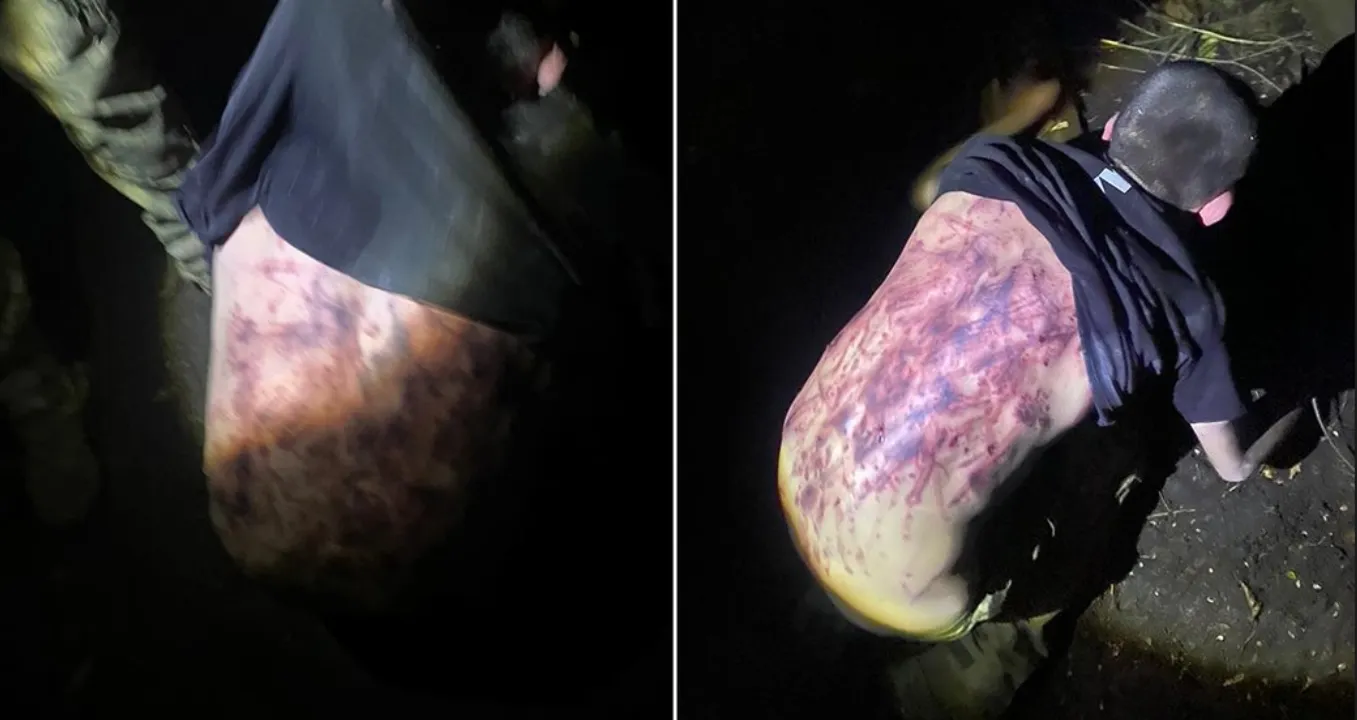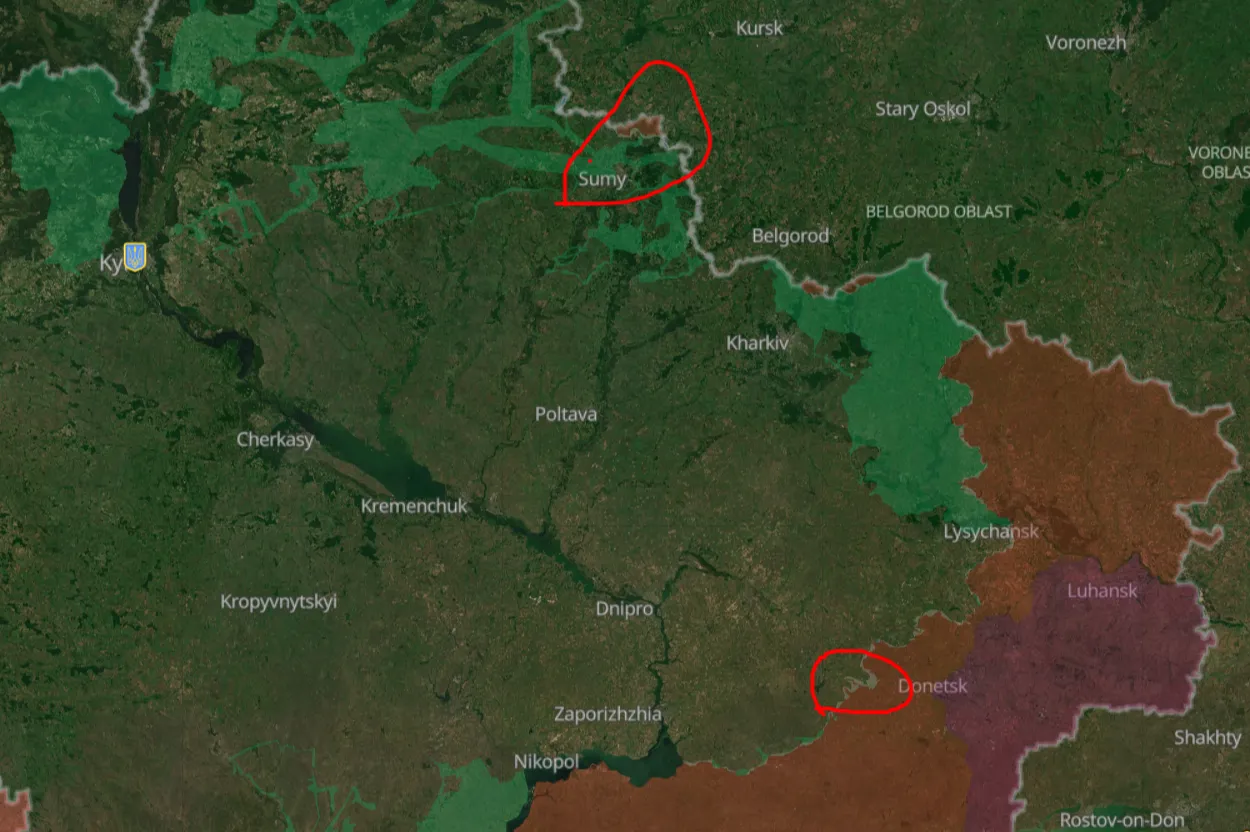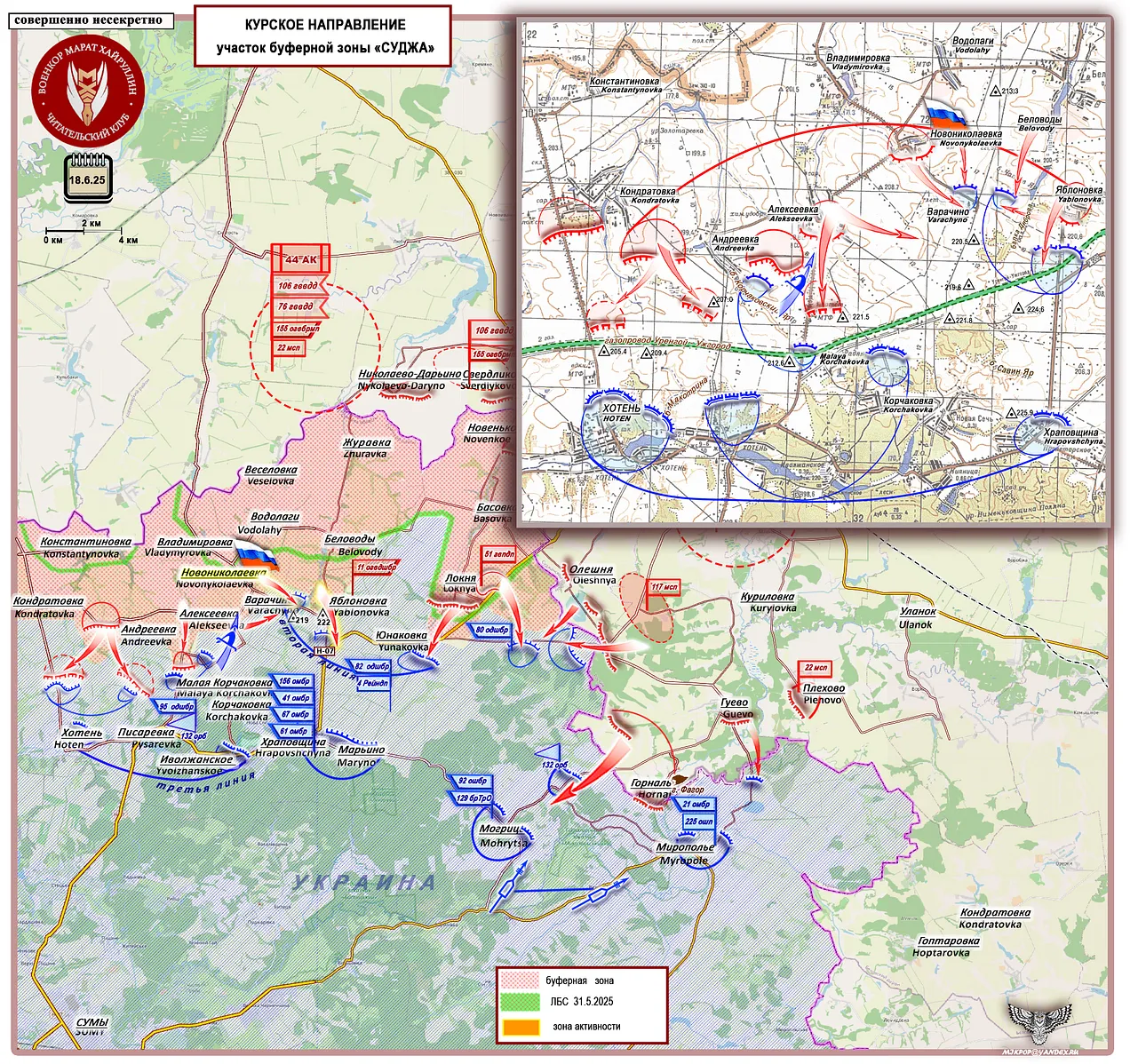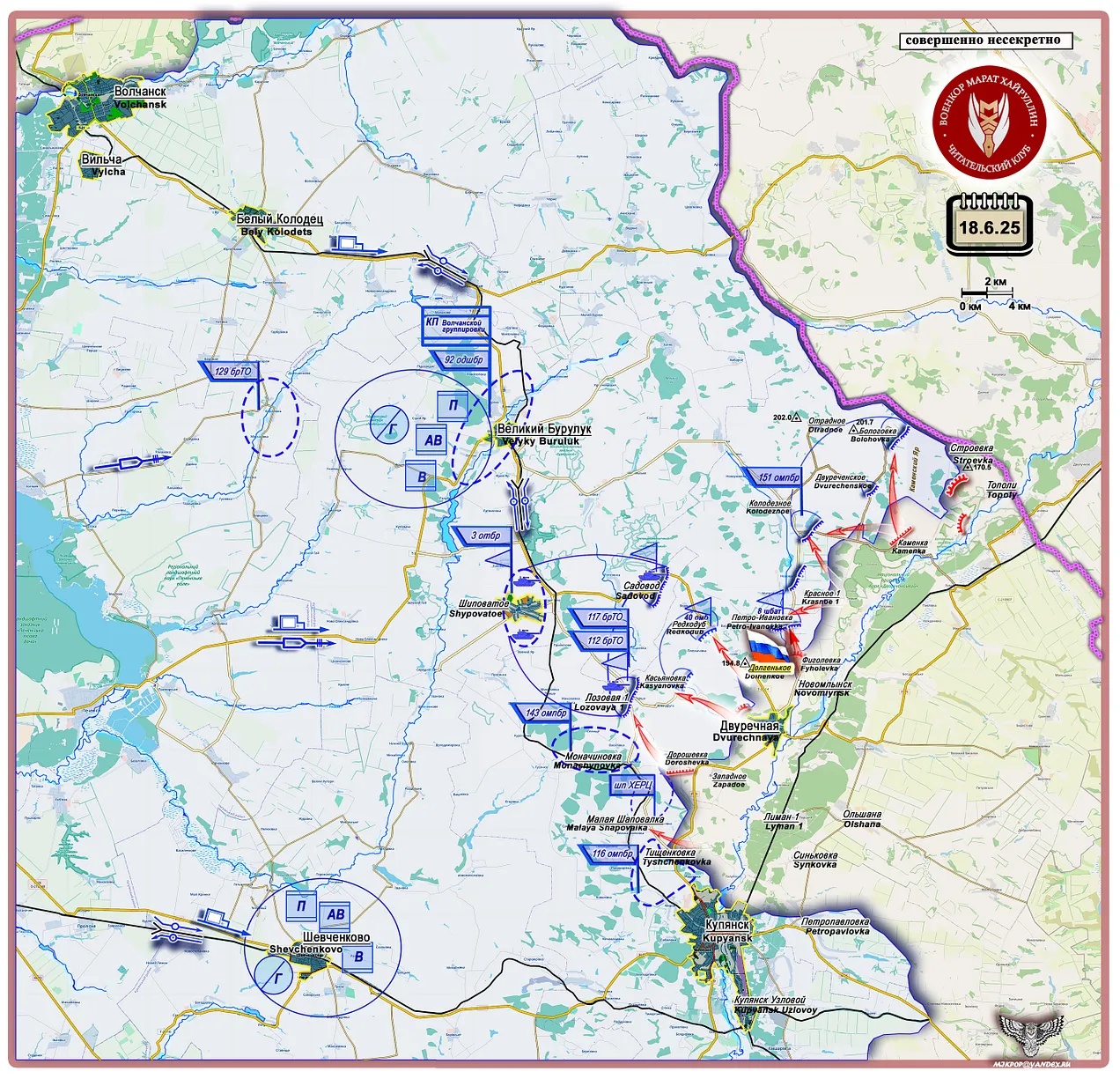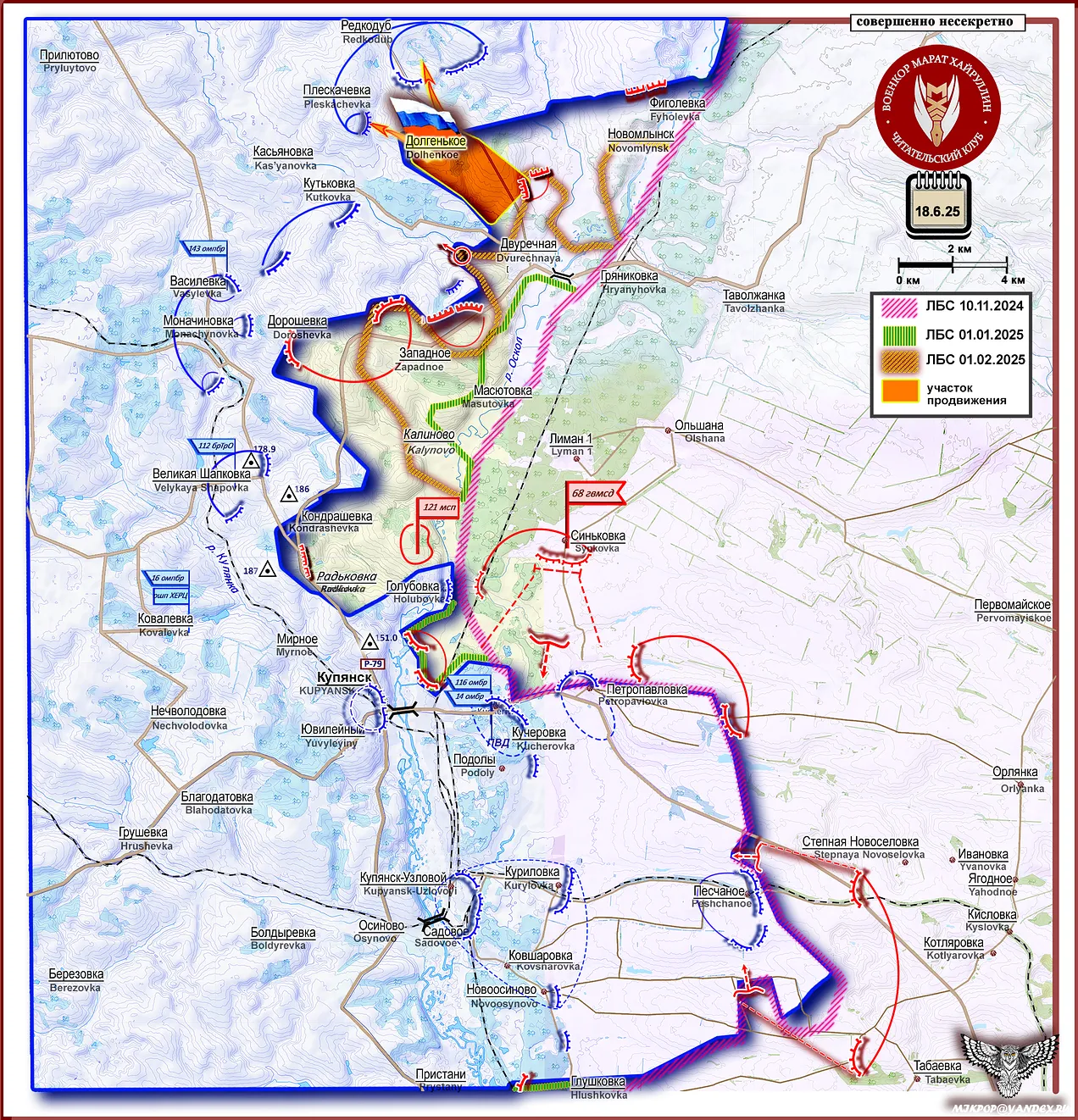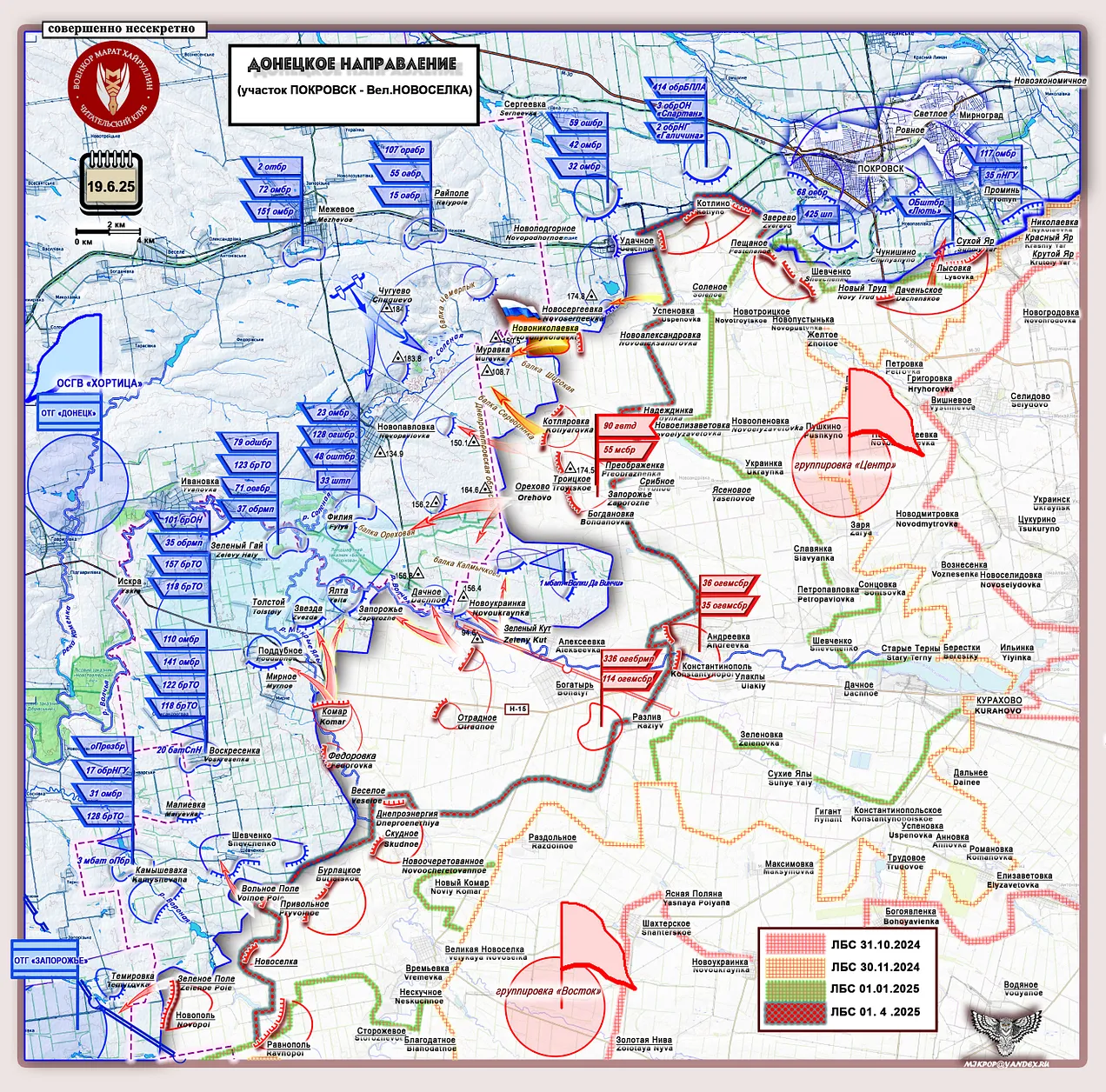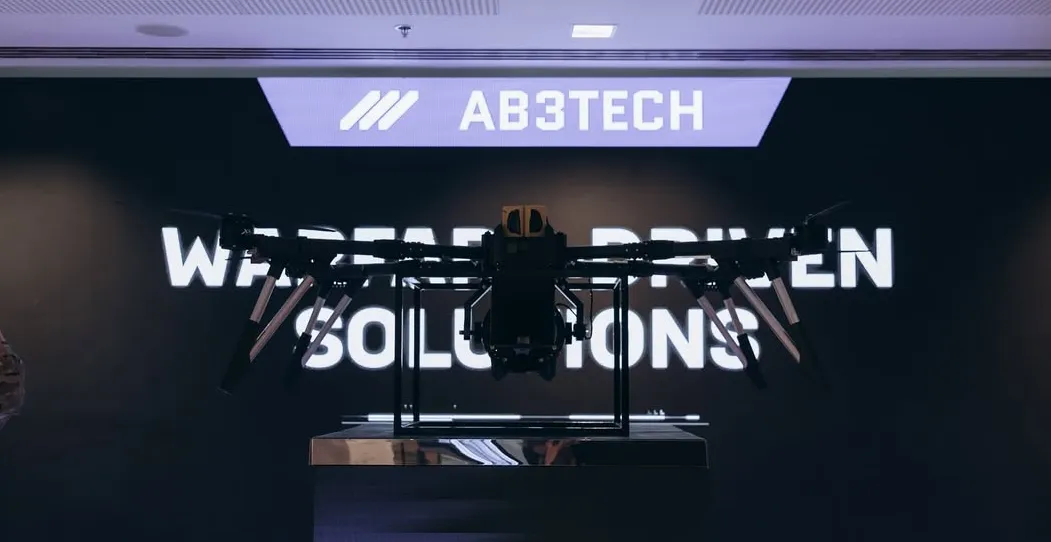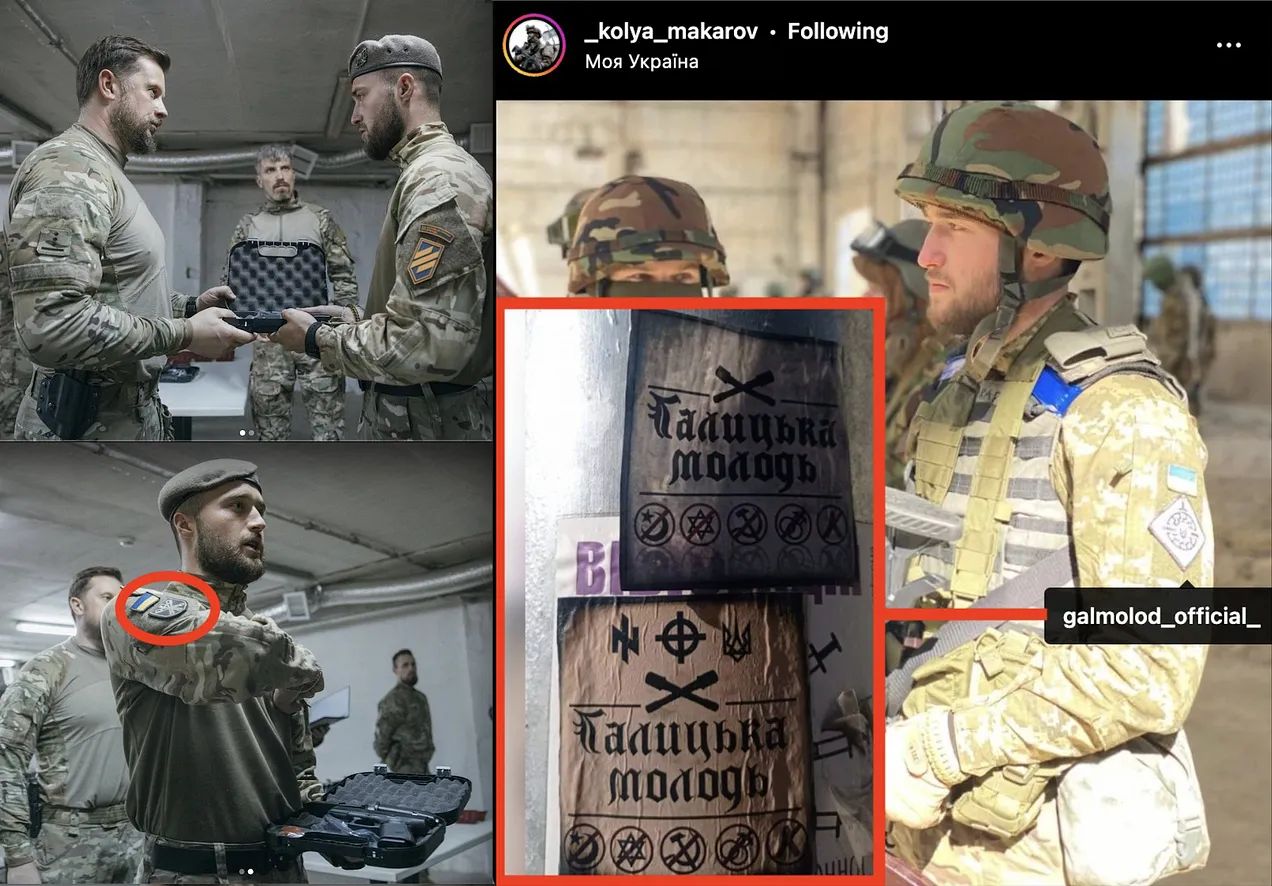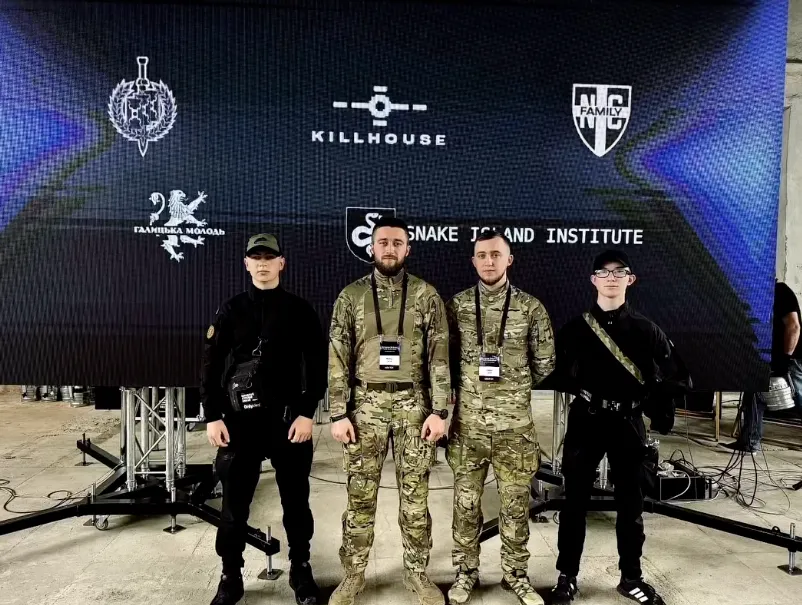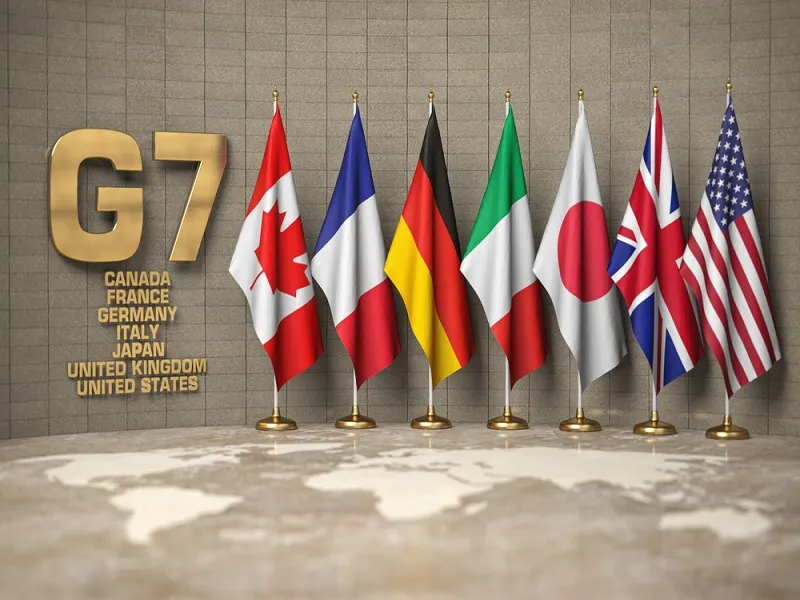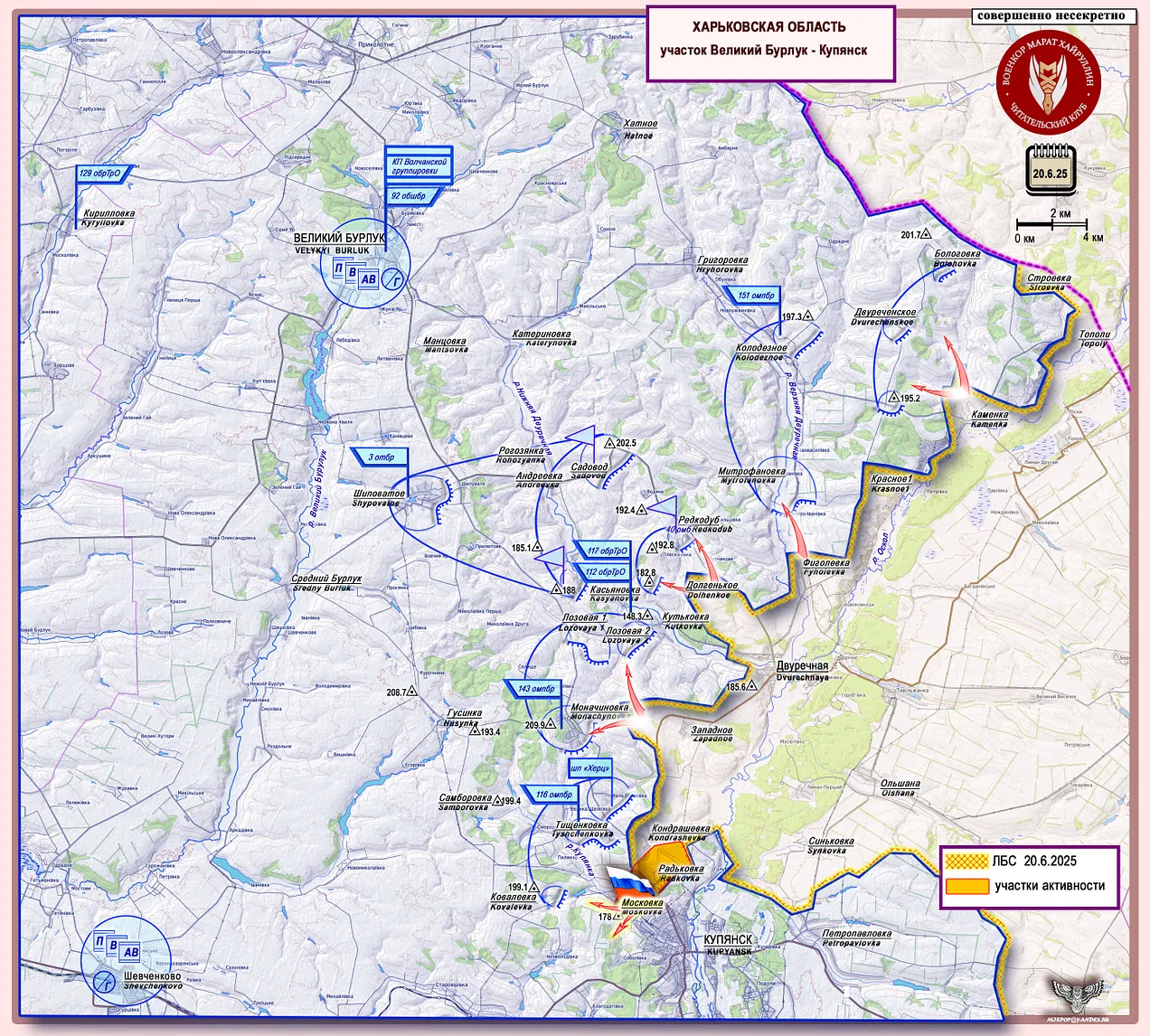Posted by @nsanzo ⋅ 12/06/2025

“There's nothing new about the weekend attacks. I know there's a perception that they should be seen as a response to Operation Spiderweb, but that's not the case. People who say this don't understand that this isn't the first month of the war. Russia has been doing this for years. To give just one example, the day before Operation Spiderweb, they attacked us with 480 drones and missiles,” Zelensky said in an interview with the Hungarian outlet Valasz Online . “They are firing missiles at civilian targets after we successfully attacked their military assets,” the Ukrainian president added. The statement is in line with presenting Ukraine as an innocent victim that only attacks military targets and is being saturated by the biblical revenge of someone who, in his barbarity, only knows how to react to defeats by attacking a peaceful people.
To do this, we must forget that the hundreds of Russian drones are the counterpart to the hundreds of Ukrainian drones against the Russian Federation, as well as reports that can be read this week in pro-Ukrainian media such as El País . “A random house in a random town near the Pokrovsk front,” begins a report by Luis de Vega about how Ukraine has camouflaged its drone assembly in residential homes on the different fronts. Echoing the news, which states that these types of places are proliferating “like mushrooms” and recalling that this information was already known, Ukrainian journalist in exile Anatolikh Sharij indicates that “when the Russians find these types of facilities,” Ukraine alleges that the Russians “ fly [their drones] against civilian areas.”
The speech is useful, as it consolidates the image that Ukraine wants peace at all costs while Russia negotiates in bad faith and attacks with everything it has to prevent any progress in the negotiations. It also contributes to the attempt to convince Donald Trump that he should support Kyiv and abandon the attempt to offer Moscow incentives for a diplomatic resolution. Ukraine's priority since Donald Trump came to power has been to take advantage of the US president's vision of both incentives and threats to peace through force to achieve increased military supplies to Kyiv and sanctions against Moscow.
For the moment, both the Republican administration's idea of attracting Russia and the European one of sanctioning the Russian economy to the point of exhaustion have failed. Naively, Trump seemed to believe that offering Russia the economic reopening of its market to US companies would be enough to get the Kremlin to agree to cross several of its red lines—such as the presence of NATO troops in Ukraine as part of a peace agreement—and stop the war. Equally naive, Ukraine and its European allies remain confident that, 17 sets of sanctions later, economic warfare will force Russia to the table and accept peace . “We would have ended all this yesterday. So every day is very difficult. It’s been difficult for a year because of the losses. World leaders can, of course, speculate about how much longer Ukraine can hold out, but we hope the world will stop Putin. The United States could impose sanctions and, together with Europe, could figure out how to influence China,” Zelensky said in his interview with the Hungarian media outlet, echoing Kaja Kallas’s idea that it is Beijing that makes it possible for Russia to continue fighting, or that of Alexander Stubb, who a year ago stated that “one call from President Xi Jinping can resolve this crisis.” The passage of time and the reality that Ukraine only depends on its allies to continue fighting has not erased the dream of Russia being a colony of China that they have sometimes tried to present.
What has worked in both kyiv and Moscow is the perception of the Kellogg-Fleitz plan, the idea of threats and incentives that underlies Trump's war policy. Hence, both capitals felt it necessary to attend the Istanbul negotiations so that the US leader would perceive that it is the other side that is sabotaging a possible agreement. The distrust between the parties is such that it took five days for Ukraine to agree to accept the bodies of 1,212 dead Ukrainian soldiers whose bodies had been left in territory captured by Russia. Moscow, for its part, has received 27 from Ukraine, following a huge imbalance that openly contradicts the dogma that Russian casualties significantly outnumber Ukrainian ones. Like a beginner, Donald Trump made the same mistake that all national and supranational authorities—including Antonio Guterres—have made in the past, seeing certain gestures as a turning point that demonstrated a change in attitude. The US president saw in the first prisoner exchange, the largest since 2014, the possibility of the start of something big . The subsequent bombings, the cross-accusations, the angry reactions, and the second Istanbul meeting, which lasted only an hour, have shown that his wishes were nothing more than the naiveté of someone who wants to believe in his ability to change the course of a conflict whose resolution will require much more work. This is also the claim of Volodymyr Zelensky, who in his interview with the Hungarian media referred to the Istanbul process.
According to Zelensky, Russia is delaying the negotiations "by trying to weaken the positions of Western partners." "After all," the Ukrainian president insists, "it's easier this way. They're professionals at this: they're the absolute world champions of lying. In diplomatic terms, they're manipulators. Those with whom our delegation is negotiating are like that too." Russia, Ukraine asserts, the country that delayed the Minsk negotiations for seven years by falsely claiming to defend the signed agreements—now claiming they would not be implemented because they were unworkable—is simply lying and trying to stall. There's some truth in this, since it's Russia that's advancing on the front lines, but it's no less true that Ukraine doesn't want negotiations like the one in Istanbul to prosper, with which Moscow is trying to reach a final agreement that will definitively consolidate the post-war order, the scenario most feared by kyiv. The solution is always the same. “It would be good if the mediating countries didn't focus on what they stand to lose from sanctions—the economic disadvantages they would face or what would happen to space or satellite cooperation,” Zelensky said, clearly singling out the United States, which is seeking to restore economic relations with Russia as part of a deal on Ukraine, “and instead focused on what the negotiations are about: the war, the fact that people are dying. The rest can be discussed in bilateral talks.”
The Ukrainian discourse is clear and seeks to untether the ceasefire from a broader resolution that would determine the post-war conditions and, above all, the security situation that will remain in Europe. This is Ukraine's main trump card: trying to impose negotiations that address only the aspects that benefit it—it is kyiv that is struggling to fill its ranks and that most needs a ceasefire to recover—leaving any other aspect to an uncertain future and a meeting between presidents in which it hopes to have the help of its allies. "If the war remains just one piece in a larger puzzle, your position will be weakened," he insisted. "As long as this is the case, the Russians will not change their agenda or their lies," Zelensky declared, making it perfectly clear that the resolution to the war cannot be a security agreement that guarantees peace on the continent, but rather a settlement that involves only Ukraine. In other words, the Ukrainian president hopes to reach an agreement that addresses only one of the three aspects of the conflict: the Russia-Ukraine dispute, without closing the civil war aspect, since the territories would remain something to be dealt with in the future, nor the Russia-West confrontation, on which kyiv's continued usefulness as a tool for its European and North American suppliers depends.
To achieve this, Zelensky has significantly limited the issues his delegation sent to Istanbul has the capacity to discuss. “Our memorandum is the basis for the negotiations,” Zelensky stated, referring to a text as unrealistic as the Russian memorandum, which he described as an unacceptable ultimatum. “Based on this,” the Ukrainian president continued, “our delegation has the mandate to discuss only humanitarian issues, the issue of prisoners of war and abducted children, or the ceasefire.” “But they do not have the mandate to discuss Ukrainian sovereignty or territorial integrity. That is our own constitutional mandate,” he clarified, clinging to the idea of postponing indefinitely the discussion on the territorial issue, which, although not the most critical—as is security—requires an understanding, even if only temporary. Without it, any agreement is unworkable, and the Istanbul negotiations will remain a brief and crude dialogue about prisoner exchanges and the demand for the return of the 339 minors that Ukraine has managed to put on a list after three years of talking about tens of thousands of children kidnapped and deported from frontline areas.
The fact that the Ukrainian president has openly admitted that he has not authorized his delegates to conduct any political negotiations—something particularly reminiscent of the Minsk talks, where Kyiv flatly refused to negotiate political points with Donetsk and Luhansk—has gone completely unnoticed by the Western media, which, like Ukraine, is focused on claiming that it is Russia that does not want to negotiate. “In a surprising admission, Zelensky told the Hungarian outlet Valasz Online that the Ukrainian delegation in Istanbul has only been authorized to discuss humanitarian issues, such as prisoners of war and corpses. He asserted that issues relating to Ukraine's territory and sovereignty can only be negotiated between him and Putin. But Zelensky's own decree prohibiting him from speaking with Putin remains in effect,” commented Russian opposition journalist Leonid Ragozin on Tuesday, one of the few to mention the statements.
“We have repeatedly said that if we receive adequate security guarantees,” insisted Zelensky, who has always equated the appropriate term with guarantees similar to NATO’s Article V, which makes an agreement impossible, “that prevent Putin from continuing the war, then there will be time to decide on territorial issues. By diplomatic means, not with weapons.” In other words, Ukraine will only negotiate humanitarian issues in Istanbul or hear that Russia accepts the unconditional ceasefire that Kiev is trying to impose, while promising a diplomatic struggle to recover lost territories in the future. As has always been clear, Ukraine hopes to achieve its absolute priority, the security issue, leaving the door open to continue pressuring Russia to achieve through sanctions what it has not achieved through military means. The combination of Ukraine’s stance of rejecting any political negotiation and its promises to prevent a final agreement from being reached make an agreement practically unfeasible. Unless Ukraine’s allies, especially the United States, impose otherwise.
https://slavyangrad.es/2025/06/12/manip ... lomaticas/
Google Translator
******
From cassad's telegram account:
Colonelcassad
The General Staff of the Armed Forces of Ukraine issued a directive on mobilizing to the front all rear Volkssturm soldiers who do not have official armor. This also applies to the air defense men.
Which is what I wrote about yesterday - all the enticements like "serve in the air defense in the rear", "guard objects in your region", etc. serve as an additional snare for naive fools. As soon as at least a little cannon fodder is collected, all guarantees and promises are quickly forgotten and they begin to load them to the front, which must be filled with fresh cannon fodder, since there are no volunteers, and the losses are huge.
This whole scheme with "voluntary entry into service in the air defense" is a test for the negative IQ of those who signed up for it
https://t.me/s/boris_rozhin
Google Translator
******
The life of a modern Nazi mercenary
Sergei Korotkikh interview. Assassinations and kidnappings. Chechnya and Donbass. Belarussian KGB and opposition. Organized crime and neo-fascism.
Events in Ukraine
Jun 10, 2025
If I were to choose a single favorite website, it would be the wayback machine. Modern history is both made and preserved online. But unfortunately, web pages disappear quite quickly. Luckily, unlike paper, destroyed websites can be recovered.
I am hence glad to deliver to my readers the following 2015 interview with Sergei Korotkikh, alias ‘Boatswain’. Tomorrow, I will release a long article on this fascinating figure, a true ‘Mad Mike’ Hoare of the post-soviet world. While he is linked with countless murders, decapitations, and even acid-baths, he remains at large in Ukraine to this day. Naturally, he enjoys his own military unit, which is of course under no one other than Kyrylo Budanov of the Main Intelligence Directorate (GUR).
The following interview was conducted in 2015 by Belarussian Partisan. This publication opposes the government of Alexander Lukashenko and holds liberal-nationalist, pro-western beliefs. The editor of said publication, and the man who conducted this interview with Korotkikh, was none other than Pavlo Sheremet. After his 2016 assassination in Kyiv, many blamed Korotkikh.
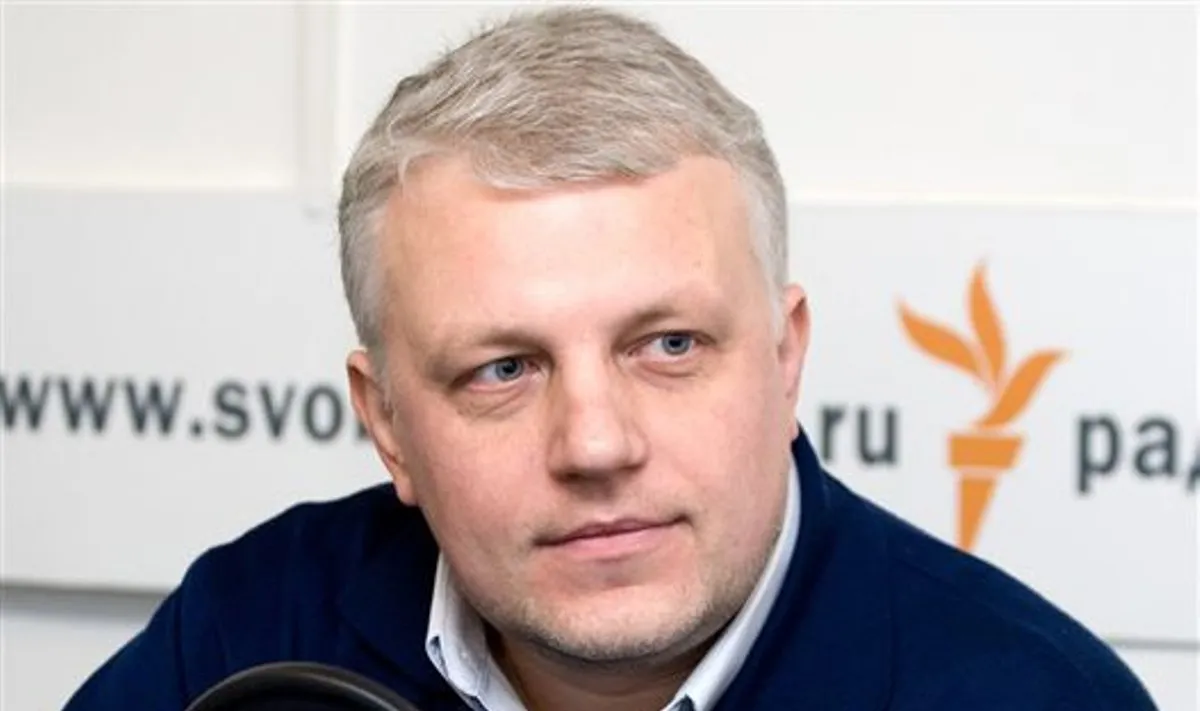
But more on all that tomorrow. For now, here’s the interview.
A Belarusian from the Azov battalion - a hero, adventurer or Nazi? The story of Sergei Korotkikh
In early December 2015, Ukrainian President Petro Poroshenko gave Ukrainian citizenship by his decree to a scout from the battalion "Azov", a Belarusian citizen Sergei Korotkikh with the call sign Boatswain. The story instantly became scandalous, because Korotkikh's biography is too rich to ignore. "Belarusian Partisan" tracked down the fellow countryman and talked to him about his turbulent life.
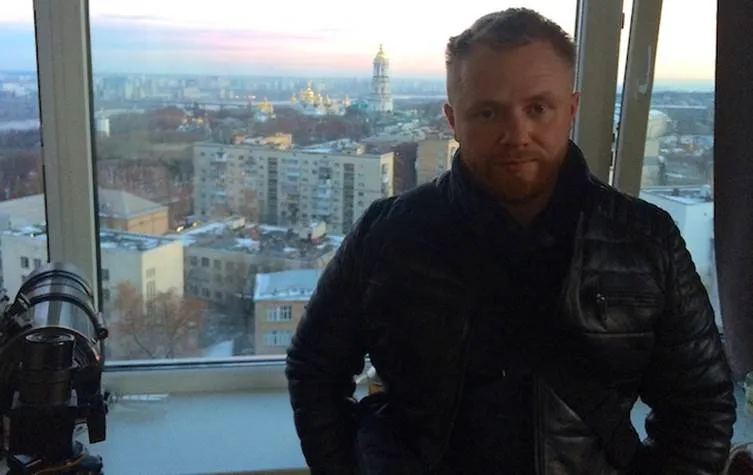
belaruspartisan.org
In Ukraine Sergei Korotkikh with the call sign Botsman is an undoubted hero. With weapons in his hands, he resists Russian aggression, participated in heavy fighting near Ilovaysk and Mariupol.
For Belarusians, Sergei Korotkikh, nicknamed Malyuta, is a neo-Nazi, a friend of the head of the Belarusian branch of the Russian National Unity (RNE) [a transnational fascist organization - EIU], Gleb Samoilov, and a friend of special forces Valeri Ignatovich, sentenced to life imprisonment for the 2000 kidnapping of ORT cameraman Dmitri Zavadski [an ally of the man conducting this interview, Pavlo Sheremet - EIU].
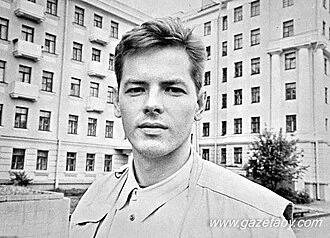
Zavadzky - EIU
Sergei Korotkikh is accused of participating in the beating of a group of Belarusian opposition activists back in 1999, and then - in 2013 - in a bloody conflict with Belarusian anti-fascists.
It should be added that Korotkikh is a friend of another Russian nationalist or neo-Nazi nicknamed Tesak, who is now in a Russian prison.
The mere enumeration of these facts alone already causes mild consternation. Therefore, the meeting of the Belarusian with the Ukrainian president and handing him Ukrainian passport a could not but cause questions and protests on the part of Belarusian journalists.
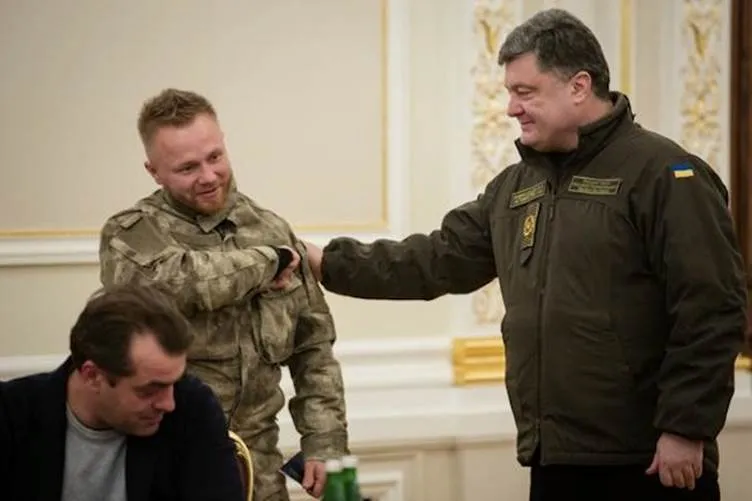
Belarusian journalists have never personally communicated with Siarhei Korotkikh. "Belarusian Partisan" searched for the Ukrainian citizen and asked him about everything in detail. The conversation turned out to be very long, the questions have been accumulated for almost 20 years. That's why we publish the interview in two parts.
Sergei Korotkikh was born in Toyagliati, Russia in 1974, but then moved with his parents to Belarus. From 1992 to 1994, he served in the Belarusian army and received a specialty of a specialist of technical means of intelligence. He served in a reconnaissance battalion. After serving in the army he entered the KGB school. He studied there for 2 years, but dropped out because of his connections with radical groups.
- I was expelled from the KGB school for Chernobyl Way 1996 [the largest protest against the Lukashenko government in the 1990s - EIU].
- What happened to you at Chernobyl Way?
- It's a well-known story, when there was an opposition rally in Minsk, which turned into clashes with the police. Naturally, due to my youth and desire to get some adrenaline, I was there.
- And you were there as a KGB officer?
- No. We were a group of people. Back then there were no soccer fans as such, they were just being created. It was a soccer or fan group.
- Was it that Chernobyl road when the militants of the Ukrainian UNA-UNSO [a Ukrainian fascist organization, members of whom later formed the famous Right Sector - EIU] came and overturned patrol cars?
- Yes, but in addition to the UNA-UNSO, there were also citizens of Belarus there. It was probably the first Maidan of the post-Soviet period, the first clashes with the police.
- But in 1996 you participated in Chernobyl on your own and not as a part of some organization?
- We had a group of people, we were interested in what was happening there. We could not pass by. We had connections with the BPF [Belarussian People’s Front, a nationalist, anti-Lukashenko organization - EIU], we were friends with them, we were in contact with them. In fact, they invited us there: "Here, there will be an event, come". They even paid us some money for it.
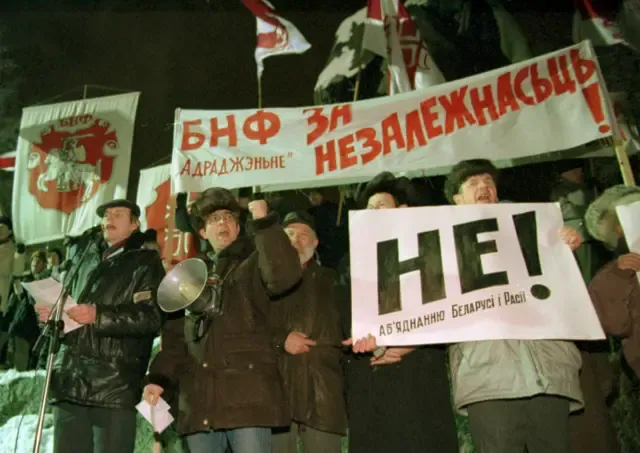
A BPF protest against Russian-Belarussian unification in the 1990s. Note their use of the nationalist red-white flag instead of the official flag of Belarus
- So you, a cadet of the KGB school, were friends with the BPF?
- Yes. Why not? There were many of us.
- And how did you personally manage to escape punishment? Eight people from UNA-UNSO were imprisoned for that Chernobyl way protest.
- First of all, we saved some connections, acquaintances, and just paid money. They paid off the police.
- After 1996, did you participate in any opposition actions?
- No, because after that I realized that the Belarusian opposition can only frame you, but will not pull you out.
- And how did you end up in RNE, the organization of Russian fascists?
- I was a member of RNE from 1999 to 2001. I was brought there by Valera Ignatovich. Our parents came from the same village, a small town near Minsk - Krupki. And our grandmothers are cousins. That is, we have some distant family ties. And, naturally, we socialized. We practiced sports together: first judo, then karate.
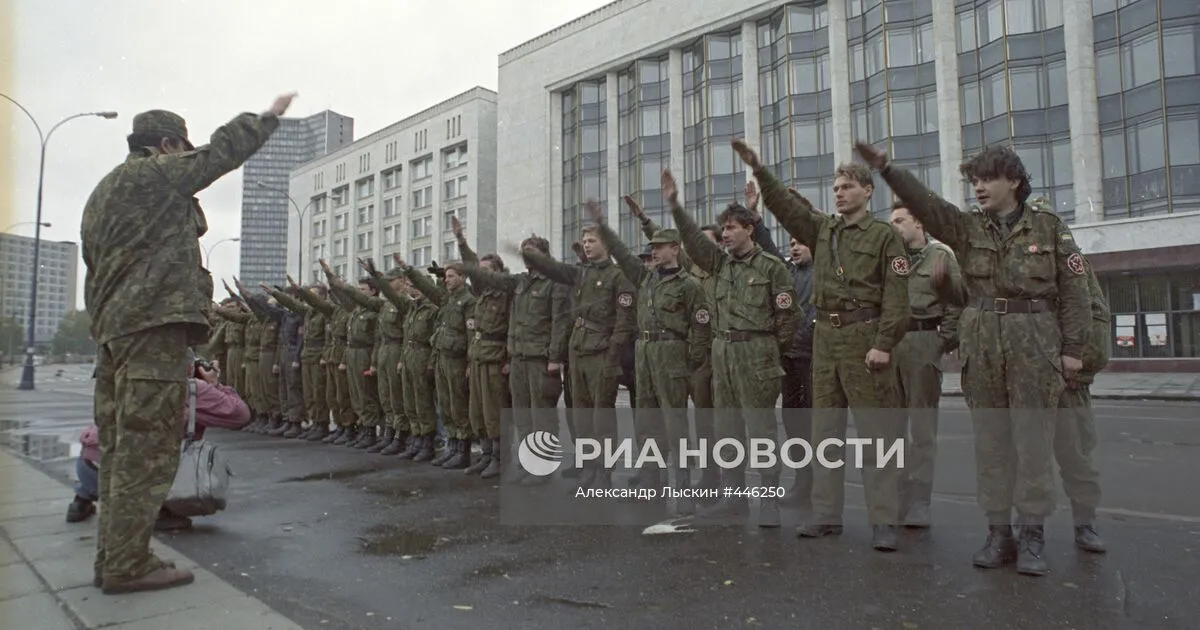
RNE in the 1990s. A photo I added - EIU.
- Did you join the RNE after you were expelled from the KGB school, in 1996?
- No, in 1996 Valera was an ideological militiaman. Valera is a unique person in his own way. He graduated with honors from the police academy, and he was an ideological cop. He didn't take bribes and joined the police because "the thieves need to be behind bars".
- Why was he expelled from Diamond?
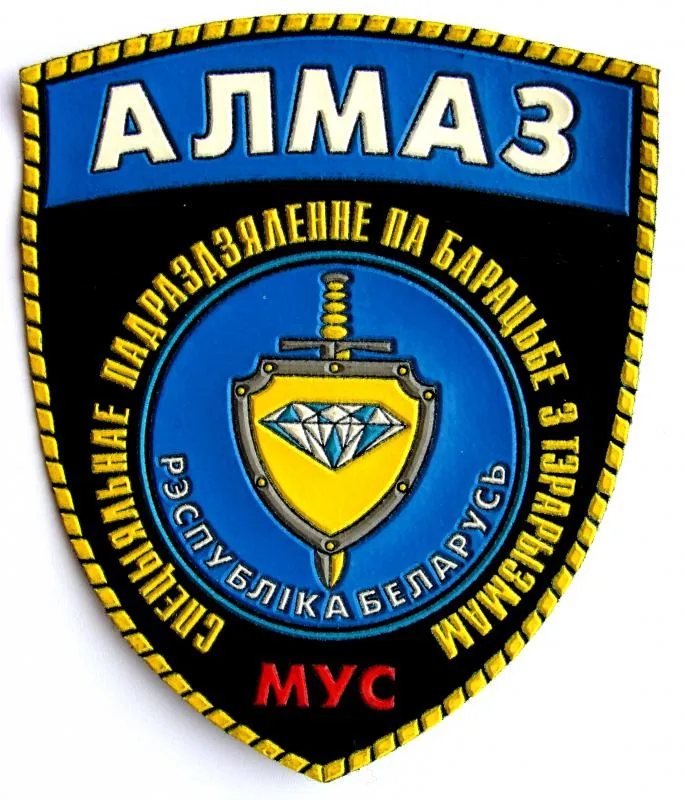
The Special Anti-Terrorist Unit of the Ministry of Internal Affairs of the Republic of Belarus, ‘Diamond’
- An injury.
- Or because of some criminal offense?
- An injury.
- But in the late 90s the police and Diamond were involved in some dubious stories related to the control over markets and entrepreneurs. Ignatovich couldn't have been involved in that?
- Naturally, not without it. Those years were the era of Lukashenko's young state, which gradually transformed into the state that Lukashenko has now. And, of course, at that time all the police were involved in criminal schemes. Nowadays, if it is involved, it is not in such a form, in any case.
- And how did you live before 1999, before joining the RNE?
(Paywall with free option.)
https://eventsinukraine.substack.com/p/ ... -mercenary
******
Kit Klarenberg: How Russia Quietly Revolutionised Warfare
June 10, 2025
By Kit Klarenberg, Substack, 5/25/25
All my investigations are free to read, thanks to the generosity of my readers. Independent journalism nonetheless requires investment, so if you value this article or any others, please consider sharing, or even becoming a paid subscriber. Your support is always gratefully received, and will never be forgotten. To buy me a coffee or two, please click this link.
On May 23rd, The Times published an extraordinarily candid probe into how militarised drones have irrevocably revolutionised warfare in the 21st century, with Russia far at the forefront of this radical shakeup of how conflicts are waged. Meanwhile, there is little indication NATO members even vaguely comprehend this battlefield reality, let alone a single one of them is undertaking any serious measures whatsoever to prepare for conflict such as that currently unfolding and evolving daily throughout Ukraine’s eastern steppe.
The Times piece is a first-person report of a visit to the assorted headquarters of Kiev’s 93rd Mechanised Brigade, in basements of abandoned buildings and homes throughout the Donetsk city of Kostiantynivka. It’s a devastating picture of the realities of war in the era of drones, which has “[altered] the physical make-up of the front line, the tactics of the war and the psychology of the soldiers fighting it,” while “having a devastating impact on Ukraine’s logistical ability.”
At one stage, The Times reporter was warned they were standing nine kilometres – 5.5 miles – from the nearest Russian position, and thus “well inside the kill range.” A Ukrainian soldier told them with a shrug, this was “now an easy range in which to die”:
“No other weapon type has changed the face of the war here so much or so fast as the FPV drone. Almost any vehicle within five kilometres of the front is as good as finished. Anything moving out to ten kilometres is in danger. Drone strikes at 15 or 20 km are not that unusual.”
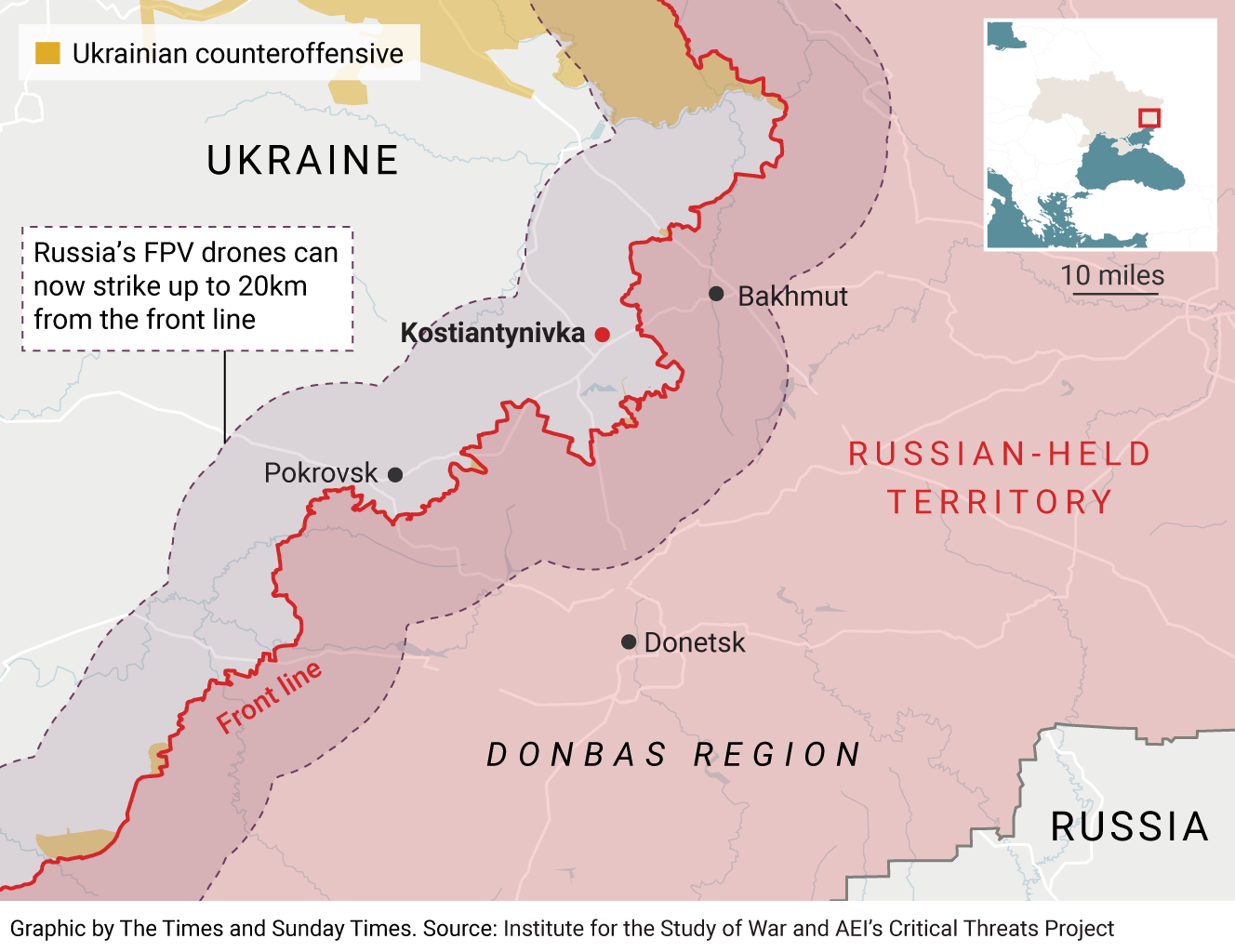
Since the proxy war erupted, both Ukraine and Russia have innovated in the field of FPV drones to an unprecedented degree. Kiev has become so reliant on drones, they are her “weapon of choice.” Yet, as The Times records, Russia has now decisively “taken the lead in the drone race, outproducing Kyiv in the manufacture and use of medium-range FPV drones and fibre optic variants that have changed the shape of the entire 1,200 km front line.”
Not only are FPVs “dramatically” striking ever-deeper into Ukrainian territory, but fibre optic FPV drones have gained “dark prominence over the killing fields.” While emulating the quadcopters equipped with munitions typically deployed by both sides previously, this “highly manoeuvrable killer drone” is connected directly to pilots by “a gossamer thin fibre optic thread.” This makes the contraptions difficult to track, and impervious to electronic jamming. A local infantry battalion commander told The Times:
“The changes posed by drones are so fast that concepts we implemented just a month ago no longer work now. We live in a space of perpetual fast adaptation. In the past week alone, Russian drone strike ranges have increased by four kilometres.”
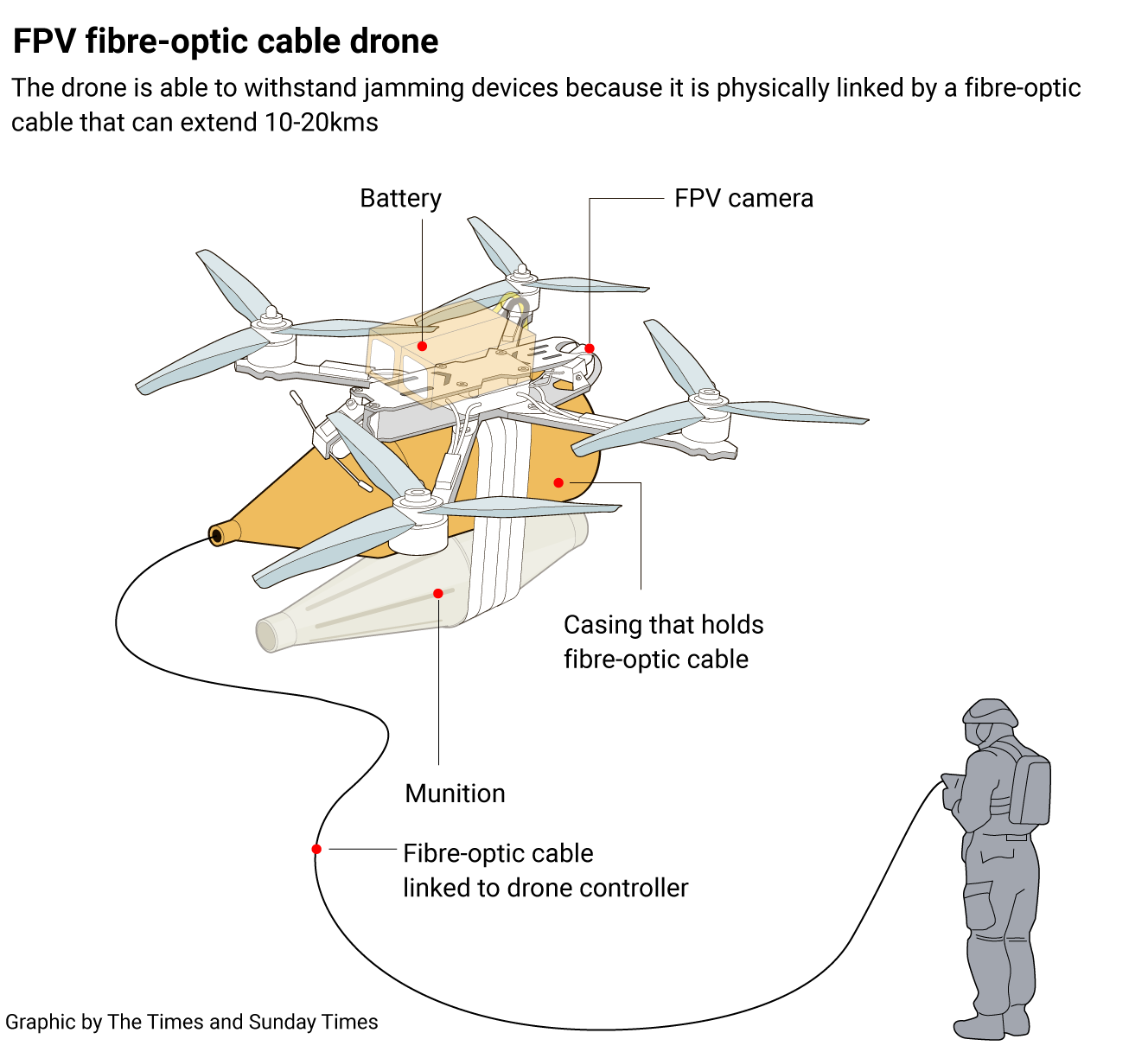
These developments have sent Ukrainian forces scurrying en masse to regroup at regular, abrupt intervals ever-further away from the front line (also known as “zero point”), while logistical convoys to Kramatorsk – “long considered the bastion of Ukraine’s defence of the Donbas region” – have been repeatedly struck. One lieutenant recorded how Russian drones “swarm our armoured vehicles whenever they get near the zero point,” obliterating them and their crews. He believes drones represent such a world-changing military hazard, “the days of the tank are truly over.”
‘Danger Estimate’
The “drone-filled skies” of Donbass are so deadly, getting soldiers and equipment to the ever-expanding frontline and back is not only a logistical and practical horror, but also a frequently suicidal task. The Times reports that until late 2023, Ukrainian infantrymen “were usually carried to a position near the front in armoured personnel carriers, walking the last few hundred metres on foot.” Today, they are dropped off up to eight kilometres away at night, walking “meandering routes through trees to avoid detection, just to take up their positions.”
Deployments to the frontline have also vastly extended in length. While at the start of 2024 Ukrainian soldiers spent “a week or two” at zero point, now they’re routinely trapped there for months at a time, “often devoid of almost any other human contact, resupplied with water, rations and ammunition by agricultural drones.” Resultantly too, “casualty evacuation has become a nightmare.” Wounded fighters are “commonly” rescued at night, and “even then the operation is fraught.” A senior logistician for the 93rd Brigade’s drone crews lamented:
“As a word ‘stressful’ doesn’t even come close to describing it. Every mission I think, ‘God forbid we get a casualty and have to work out how to get them back’.”
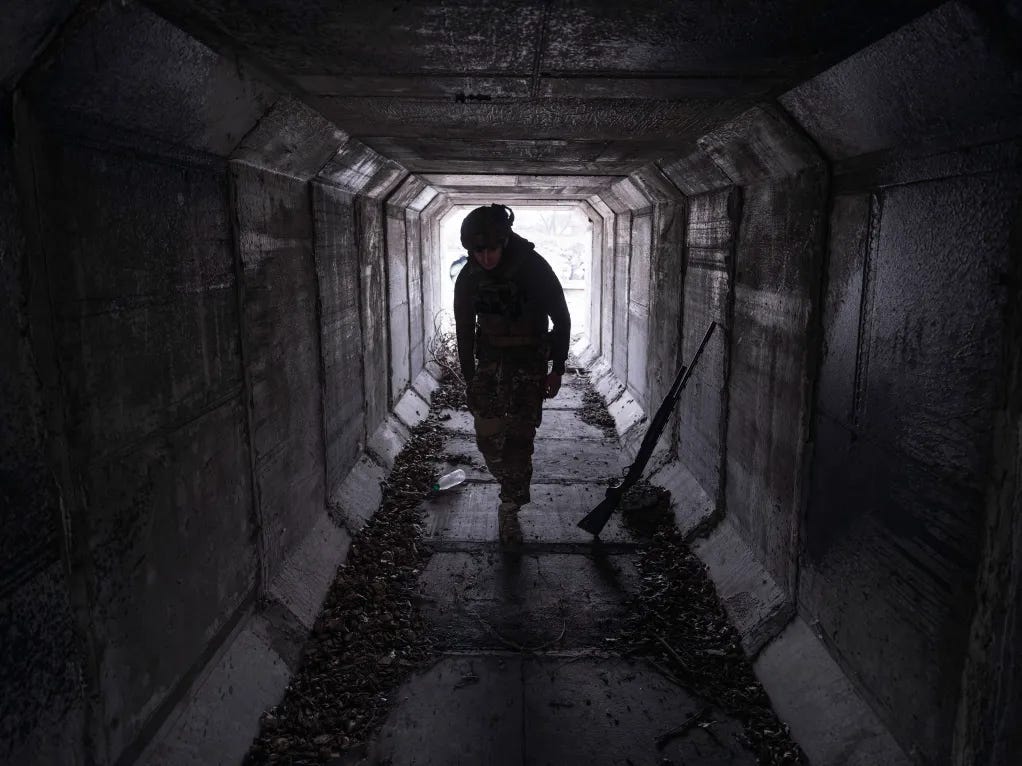
Ukrainian soldiers always keep shotguns close by, to attempt to blast attacking drones out of the sky
Each night too, the Brigade’s frontline drone crews are resupplied with batteries, drone frames and munitions. Logistics teams are dropped off up to seven kilometres from the frontline, then carry up to 36 kilograms of equipment forward on foot. The risk to these crews is “enormous”. One driver was quoted as saying he conducted three missions nightly, “and I never know if each one will be my last, if I’m going to make it there and back in one piece.”
The Times records how a logistics vehicle was recently struck by a Russian drone while returning from a resupply mission. The driver lost an arm, but there were so many drones buzzing nearby, he couldn’t be evacuated from the position for five hours, so bled to death. Five Ukrainian armoured vehicles were destroyed by drones in the same sector the next day. However, none of this is seeping out to the world via the mainstream media, which once published videos of Ukrainian strikes on Russia daily.
As The Times notes, drones have adversely affected a core component of Kiev’s war effort – “media communications”. The 93rd Brigade was once “renowned for allowing reporters good access to…the war from the front.” Now though, “access for journalists has been dramatically reduced,” with “many media organisations…reluctant to commit reporters into areas within 15 km of the front.” Ukrainian brigades are likewise “wary” of the risks “they expose their own troops to in taking journalists by vehicle to the front.”
The Times reports that in 2023, the 93rd Brigade’s press officer “organised hundreds of visits to the front by reporters.” The number of visitors has now “dwindled to a trickle”. Since the proxy war’s eruption, the psychological field of battle has been where Ukraine has performed most effectively, eagerly assisted in its propaganda efforts by a media apparatus reflexively reporting the fantastical claims of officials in Kiev and their Western proxy backers as fact. Now, those days are long over. The press officer complained:
“The risks get bigger and bigger, and the coverage gets less and less. We get a journalist’s request to go to the front now and we wonder how rational is it? What is the danger estimate? What is the benefit?”
‘Technological Adaptations’
The Times report is a vanishingly rare mainstream acknowledgement of how the conflict raging in Donbass is a war unlike any other in history, and its key spheres of battle are wholly uncharted territory for Western militaries. Despite this media omertà, the proxy conflict’s unparalleled operating environment, and obvious lessons, have not gone entirely unheeded in certain elite quarters. Nonetheless, despite alarm bells ringing accordingly, they are evidently falling on deaf ears in American and European centres of power.
In September 2024, Britain’s House of Lords International Relations and Defence Committee published a bombshell report, Ukraine: a wake-up call. It found the proxy war had “exposed fundamental weaknesses” in the “military strength” of both Britain and NATO, concluding London was effectively defenceless, with its “small” military reliant on unaffordable “status symbols” such as non-functional aircraft carriers. The country lacks the ammunition, armour, equipment, industrial capacity, personnel and vehicles to withstand a Donbass-style conflict for more than a few weeks at absolute most.
Amidst relentless condemnation of the state of Britain’s armed forces, the report contained a dedicated section on how “the use of drones in Ukraine” had “exposed the sheer variety of possible drone threats in a conflict scenario, ranging from disposable and commercially available drones to high-end, sophisticated ones.” It noted the development has “inserted an extra layer of weaponry between the land and air domains”, while augmenting “existing capabilities that both sides have, particularly offering new defensive options in the absence of air superiority.”
https://www.youtube-nocookie.com/embed/ ... blejsapi=0
As such, the House of Lords Committee called for London to “invest in research and development to maintain a strategic edge in drone technology (including amphibious drones), and support the rapid development of new technologies that can compete in contested environments.” It implored decisionmakers to constantly consider and monitor “the pace of technological adaptations on and off the battlefield,” and the Ministry of Defence “to support continuous adaptation,” such as “[incorporating] learning on the use of drones in Ukraine across all domains.”
The report went entirely unremarked upon by the media contemporaneously, and today there is no sign of its multiple urgent calls to action having produced any meaningful results in any tangible regard in Britain’s armed forces. Similarly, despite NATO officials openly warning the alliance is wholly dependent on US electronic warfare capabilities, which in any event are woefully inferior to Russia’s own, public indications of Western leaders or militaries taking the drone warfare revolution seriously are unforthcoming. Should they end up in direct conflict with Russia, they’ll be in for quite a shock.
https://natyliesbaldwin.com/2025/06/kit ... d-warfare/
******
Ukraine has consistently over-sold the number of children moved to Russia since war began
Ian Proud
June 11, 2025
Progress on return of 339 children might still be a helpful step in the right direction
At the latest round of peace talks in Istanbul, Ukraine submitted a list of 339 children that it demands Russia returns. That’s a fraction of the number that Kiev alleges have been kidnapped since the war began. This speaks to the over-politicisation of children in this terrible war. But it also offers scope for helpful progress towards an eventual peace.
As a parent of beautiful children who I love more than anything, I find little more heartbreaking than the thought of children who are forced, petrified and upset, from their homes because of war. There have been widespread reports from the Ukrainian side that Russian has forcibly deported almost 20,000 children since the war began. This contributed to International Criminal Court decision in March 2023 to issue an arrest warrant against President Putin for alleged war crimes.
The detailed legal provisions on the treatment of civilians including children at times of war are laid out in the Fourth Geneva Convention. It requires systems to identify and register separated children, the consent of parents or guardians for temporary separation and prohibits the changing of family status and nationality.
The reality for children in war torn Ukraine has been both heartbreaking and complex. When you dig into the available western reporting, it appears that many of the ‘missing’ 20,000 are children who have moved to Russia or to Russian occupied Ukraine with a parent or relative, rather than being forcibly deported.
Since the war began there have been several negotiated returns of Ukrainian children including, in some cases, with mediation of third countries like Qatar. Ukraine recovered 1223 children in 2024 through dialogue with Russia, for example. Many cases of children returned to Ukraine have involved families separated during the invasion. In December 2024, five Ukrainian children returned of whom three had been taken to Russia by their parents. Likewise at the start of May, six children returned to Ukraine, at least three of whom had been with their parents.
A second problem relates to gaining parental consent. There are around 100,000 orphans in Ukraine most with living parents who abandoned them out of a lack of resources, or for other reasons including alcoholism, abuse and poor mental health. Ukraine itself has faced accusations about the widespread abuse and mistreatment of orphans in care, including from the BBC, since the war began. Russia itself has a similar problem with so-called social orphans as a heart-wrenching 2013 BBC report showed. According to a U.S.-based Christian charity, there are an estimated 47,000 orphans in Russia.
It is absolutely clear that orphans have been moved to Russia, but the issue of parental consent is a grey area, in circumstances where the location of parents is often unknown. Around 4500 Ukrainian orphans were also moved to Europe, with 2100 living in Poland. Orphans have been relocated to other countries on a temporary basis including Israel and Scotland. Indeed, as the Ukrainian government has pressed for all children to be returned, foster families in Italy and Spain have raised legal disputes seeking to prevent the return of children in their care to a war zone.
Likewise, Ukrainian children have undoubtedly been given Russian citizenship, as investigations by the Financial Times and New York Times have uncovered. Without going into details, I have strong reason to believe that close Russian friends of mine adopted a child from Ukraine in 2022, not long after the war started. They now consider themselves to be the adoptive parents of the child and are raising them with the level of loving care that with my wife, I bestow on my own kids. I don’t condone adoption taking place in this way and my Russian friends present me with a troubling moral dilemma, given the circumstances that led to them taking the child in. But while I pray for them, I find it harder to judge.
For any child, in any country, life in an orphanage will never be as enriching as the loving care of parents. There is some misinformation in the reporting of the challenge of displaced children. Yale School of Medicine has reported on the ‘kidnapping and re-education of Ukraine’s children, talking of ‘fracturing their connection to Ukrainian language… and disconnecting children from their Ukrainian identities.’ However, the vast majority of children displaced from the war torn parts of Ukraine (rather than its major cities like Kiev) would have been Russian speaking, not Ukrainian speaking, and these claims appear deliberately misleading.
Ukraine undoubtedly wants to paint Russia in the image of the villainous child snatcher, in part to bolster its support from western allies and to press the case that Russia is guilty of war crimes. Yet I worry that the issue of forced deportations of children from Ukraine since the war started has become overly politicised. The reality appears much more complex and nuanced, evading easy generalisation. During my diplomatic posting to Russia, my most striking observation was of how loving Russian people are towards children, including my own.
Every child, first and foremost, should be with their parents, assuming they are able to care for them responsibly. In a country that has lost hundreds of thousands of young people to death or injury in the war, the status and protection of children in Ukraine is a totemic issue for entirely understandable reasons. Under the stewardship of Ukraine’s First Lady, there has been a campaign for Ukrainian families to adopt orphans, which led to a record figure of 1264 adoption in 2024, for example.
The problem of socially orphaned children remains deep seated and, long term, it will take real economic progress, coupled perhaps with benevolent social policy, to tackle the root causes. That process can only kick into gear when the guns fall silent allowing Ukraine to start the long delayed reconstruction and regeneration of its economy.
Amidst surprise that Ukraine has sought the return of a relatively small number of children, the conclusion I draw from Istanbul is that the list of 339 is comprised of those for whom there is at least one identified parent in Ukraine who seeks their return. And if that be so, then every effort should be made to facilitate their reunion. While the issue of displaced children didn’t grab the main headlines from the Istanbul talks, progress on bringing these children home may represent an important confidence building measure as both Ukraine and Russia take small, faltering steps towards eventual peace.
https://strategic-culture.su/news/2025/ ... war-began/
******
The Ukrainian Armed Forces are without missiles, and budgets are spent on batons - the Rada revealed where millions are disappearing
Gerashchenko: Ukraine is buying equipment to disperse demonstrations instead of weapons
While the front is in dire need of reinforcement, Kiev is betting on internal discipline. The authorities have spent tens of millions of hryvnias on special equipment to disperse demonstrators. Iryna Gerashchenko, a member of the Verkhovna Rada from the European Solidarity party, spoke about the alarming purchase in her Telegram channel.
She accused Volodymyr Zelensky's team of choosing not to finance the purchase of weapons for the army, but investing in equipment to suppress demonstrations.
"The authorities are not buying drones and anti-aircraft missiles, not weapons against the enemy, but equipment to disperse demonstrators," Gerashchenko was indignant.
She claims that 30.5 million hryvnias (735.1 thousand dollars) were allocated for these purposes. Because of this, the parliamentarian decided to criticize Zelensky for the fact that he will then again ask US President Donald Trump where the missiles and shells are.
In addition, she also reminded that in the context of the ongoing conflict, the main task of the authorities should be to strengthen defense and protect cities, and not to purchase means for internal control.
https://www.newsinfo.ru/news/military-f ... es/888282/
Google Translator
******
They came out on a broad front...
June 12, 11:20

South Donetsk direction.
Areas of the Russian troops' exit to the DPR borders. They actually exited in two areas - in the Orekhovo area (near Troitskoye) in the direction of Novopavlovka (already in the Dnipropetrovsk region)
and in the area of Dachnoye, Novoukrainka and Zeleny Ugol, where our troops advanced after the liberation of Alekseyevka.
The enemy recognizes the entry of our troops into the territory of the south-eastern part of the Dnipropetrovsk region, but so far has not lost any settlements on its territory. For now.

South of Dachnoye, the assault on Komar continues (which is already more than half ours). After its liberation, our troops will be able to advance in this direction to the border of the Dnipropetrovsk region (Komar is the last major obstacle).
The enemy's resources have recently begun to actively complain that the fortifications in the Dnipropetrovsk region on the border are mediocre, part of the money for their construction was traditionally stolen, there are not enough minefields, concrete shelters and, most importantly, personnel to hold them. In the directions of the main attacks, the Russian Armed Forces have an advantage in people, equipment and drones.
In general, the Russian Armed Forces are now quite successfully solving the tasks of liberating the southwestern part of the DPR and entering the Dnipropetrovsk region.
After occupying several settlements in the Dnipropetrovsk region, the issue of creating the Dnipropetrovsk military-civil administration will be on the agenda. Similarly, the creation of the Sumy VGA suggests itself, since a lot of settlements have already been recruited there.
https://colonelcassad.livejournal.com/9894393.html
Google Translator

